Food and Festivals

Holi Festival in Nepal
By Suraj Katwal
Updated On Feb 18, 2024
Holi festival in Nepal is another most loved festival celebrated by Hindus from all around the world. Besides the biggest festivals, Dashain and Tihar , all age groups enjoy the festival of color in Nepal.
so, In this article, you are going to learn about
- What is Holi?
Why Holi is celebrated?
- The myth behind the Holi festival.
- How to celebrate Holi festival in Nepal including Tips ?
- Why is Holi called the festival of colors?
If you ever visit Nepal during early spring, then don’t ever miss the chance to celebrate the Holi festival.
Holi is famous among Hindus of all groups of people, especially the young ones. Holi is mostly famous in India and Nepal as these countries have the highest density of the Hindu population.
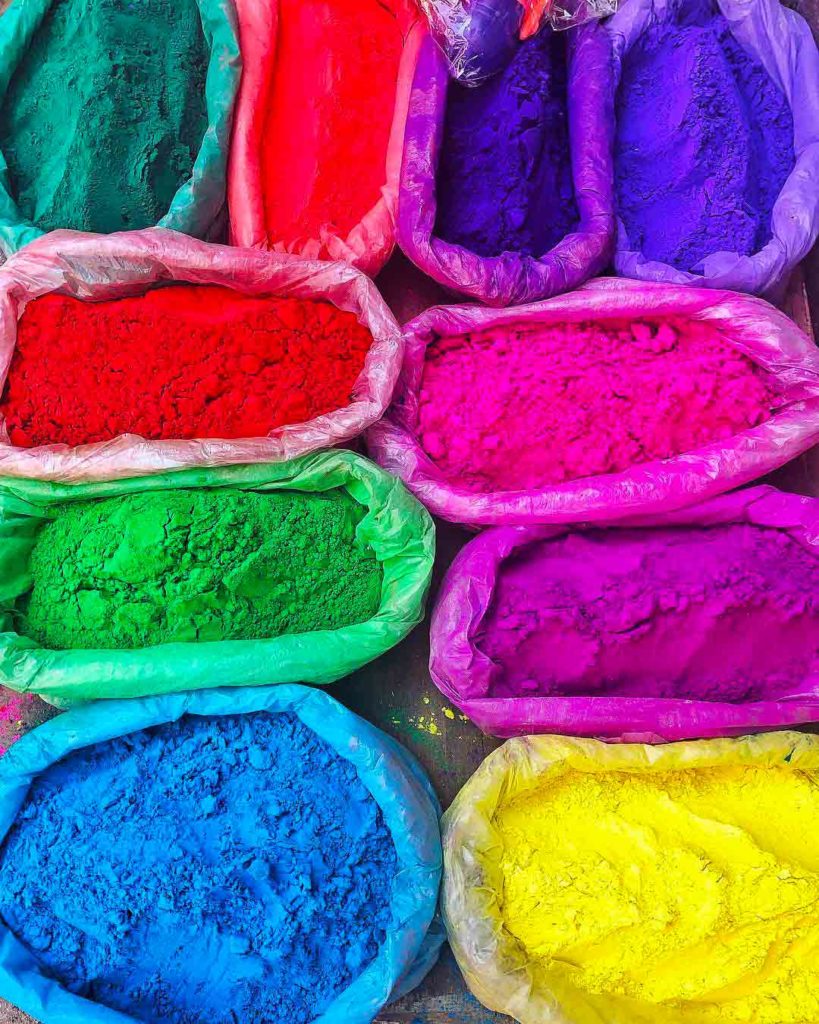
It is even becoming more popular among non-Hindus. The festival of color powder is loved by foreigners and people outside Asia are keen on this festival.
Besides celebrating the festival, on this day people love to dance, enjoy the concert, enjoy soft and hard drinks, etc.
People also collect firewood, light bonfires, add hemp to their food and drinks, and make fools of themselves.
The festival indicates the start of spring. In Nepal, the Holi festival is celebrated for 2 days.
Fagu Purnima – Holi Festival in Nepali
The Nepali name of the Holi festival is Fagu Purnima . Nepalese celebrate Holi on the Falgun (February-March) i.e. the 11th month of the Nepali calendar on the day of the full moon . so, Fagu is named after Falgun month and Purnima means a full moon .
Fagu Purnima is a festival celebrated by Hindus hailing the arrival of the Spring season. The festival is all about colors, love, joy, and excitement.
The Myth Behind Holi Festival
There are several legends describing how and why people started to celebrate the Holi festival.
The most popular story is about Lord Vishnu, the Evil King Hiranyakashipu, the king’s son Prahlad, and his evil aunt Holika .
All the myth is connected to Prahlad who is a devotee to Lord Vishnu. Prahlad’s father, King Hiranyakashipu who was the evil king. In the arrogance of his strength, he started believing himself as God.
He banned the name of God in his Kingdom but his own son Prahlad defied Hiranyakashipu and continued to worship Lord Vishnu.
King Hiranyakashipu tried to kill his own son Prahlad in different ways but the evil king failed. Finally, his sister Holika, who had received a boon that made her invulnerable to fire.
One day Hiranyakashipu and Holika decided to take Prahlad to Pyre. Holika convinced Prahlad that she would protect him from fire. Holika who was invulnerable to fire entered the pyre with Prahlad so that he would burn to death.

But, by the grace of Lord Vishnu, Prahlad was untouched by fire but Holika was burned to death. The next day, people smeared the ashes over their heads and bodies as a celebration of the victory of good over evil.
Later these days, people use colors instead and it becomes a tradition to play Holi between people as a celebration.
It is believed that Holi was originally celebrated to protect general people from different diseases that happen while changing the season from winter to spring.
Traditionally, the colors used in Holi were made using extracts of flowers and Herbs like Neem, Tumeric, Mehendi, Kumkum, etc. The natural colors used to work as Ayurvedic medicines.
The medicine was used to cure high fever, and skin diseases, and in fact, the color is best for the skin.
But nowadays, synesthetic colors are used in the Holi festival which is made using dyeing agents and other chemicals. The synesthetic colors have lost the medical value of Holi. But nevertheless, people enjoy the Holi festival.
How Holi is celebrated in Nepal?
Children start to play with colors a week before the actual Holi festival begins. A lingo (a long bamboo stick) is raised in Basantapur Durbar Square in Kathmandu and wrapped in clothes with various colors (also known as Chir).
The day before Holi, the long bamboo log is taken down and the chir is burnt, signaling the start of Holi. This tradition is known as Chir Dahan or Holika Dahan, symbolizing the end of Holika.

The Holika Dahan is also performed in different town squares and villages by burning wooden logs to celebrate the victory of good over evil.
Although Holi is mostly associated with colors and water games, this is an important part of the festival too.
In Nepal, the Holi festival lasts for 2 days. people in the hilly region celebrate the festival on the first day of Holi followed by Terai region people on the second day.
On the day of Holi, people visit their friend’s and relatives’ houses and color each other, dance, and drink for the whole day. Nowadays people throw water at each other. so the Holi festival is all about color and water.
Families gather in one place and enjoy food, and music, including hard and soft drinks.
Countdown to Holi: How many days to Holi?
Tips for Holi Festival in Nepal
Holi is a somewhat festival of freedom and celebrating it is free and open for people to play in Nepal. If you go out in the street, it is almost 100% sure that the people who are celebrating the Holi festival will get you into the colors and water. So be ready to get wet and colored.
If you are outsiders visiting Nepal during the Holi festival then we suggest getting involved in the Holi celebration. It is a one-time opportunity and you will get a lifetime experience.
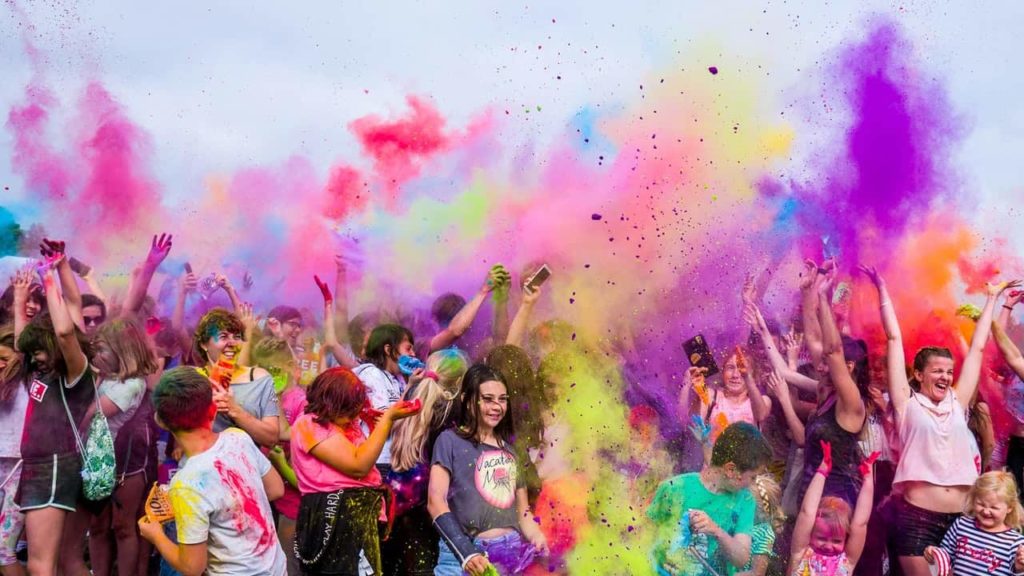
There are lots of venues where people celebrate this festival full of joy and excitement. Basantapur, Jhamsikhel, Thamel, Lainchaur, etc are the famous places where people get together and celebrate the Holi festival annually.
You can gather together with your friends, and family and throw color and water. You can also play Holi with other participants and take part in parties too.

Moreover, you can enjoy concerts held in various places supported by local bands and artists sponsored by different national and international brands.
Let’s learn quick tips on how to celebrate Holi festival in Nepal .
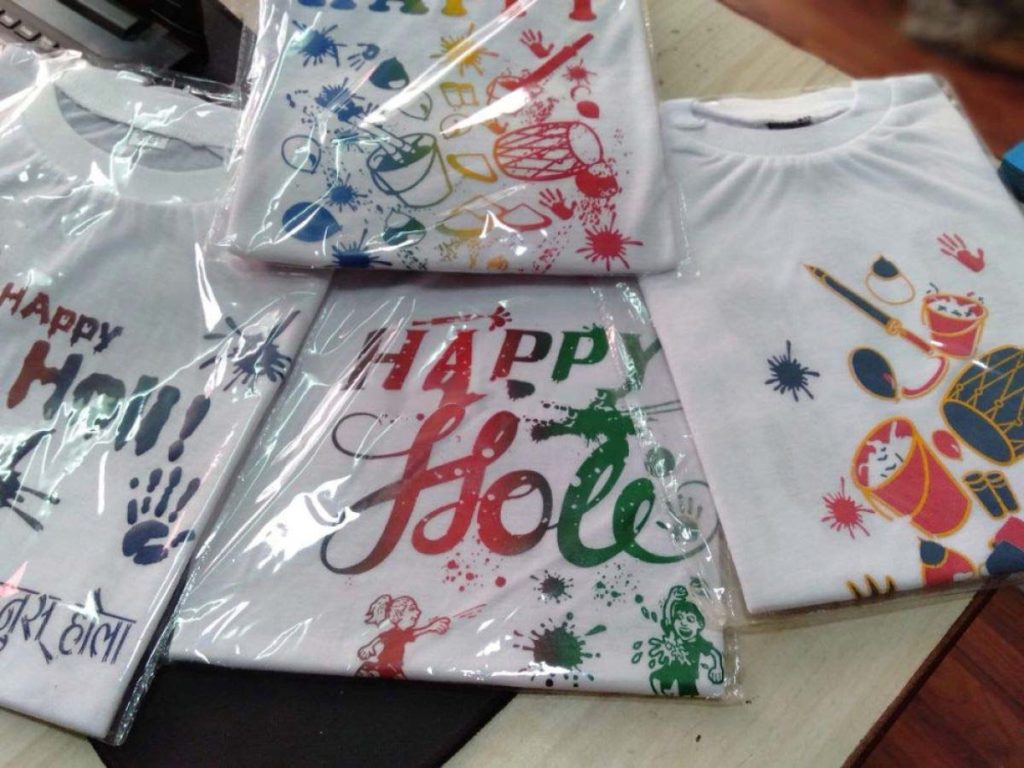
- Buy white T-shirts. You can get cheap Holi-printed T-shirts that cost around 200-250 Nepalese rupees. so, after playing Holi, you can throw or keep it as a souvenir.
- Wear old pants or half pants so your new clothes don’t get ruined.
- Don’t wear leather or any new pair of clothes.
- If possible wear goggles to protect your eyes.
- Cover your ears with cotton.
- Cover your mobile phone and camera with plastic so that it won’t get wet.
- Don’t wear expensive ornaments.
- Do not eat anything given by strangers.
- People normally taste Hemp mixed with Lassi. Be aware of these kinds of stuff, you may feel Lightheadedness or Dizziness .
- Better play Holi with your friends and family.
- Better not to visit alone in the street during the festival.
- If you are prone to color allergy then totally avoid the Holi festival.
- If you are an outsider, get the guide with you.
- Enjoy soft drinks only ( If possible avoid them )
- Don’t drink and drive.
Frequently Asked Questions
What is holi and why is it celebrated.
Holi is a festival of colors played full of joy and excitement. Holi is celebrated to welcome the spring season. Also, there is a story relating to Lord Vishnu, Holika, Prahlad, and King Hiranyakashiapu .
In which Nepali month does Holi mostly fall?
Falgun , the 11th month of the Nepali Calendar is where the Holi festival falls. According to the Gregorian calendar, the Holi festival falls in March but sometimes in late February and it lasts for 2 days in Nepal.
How many festivals are there in Nepal?
There are over 50+ festivals celebrated yearly in Nepal. Most of the festival in Nepal falls on fixed dates. Among them, Dashain and Tihar are the biggest festivals.
Is Holi safe for tourists in Nepal?
Yes, Holi is totally safe for tourists in Nepal. Holi is an inclusive festival and foreigners are easily welcomed. Moreover, Nepalese love to play Holi with outsiders. But always be aware of bad companies.
Are you interested in celebrating the Holi festival in Nepal ? If the answer is YES then I hope this article helps to know more about Holi and how it is celebrated in Nepal including the valuable tips.
If you have feedback or comments please feel to post below in the comment box.
Read the post later. Pin it right now.
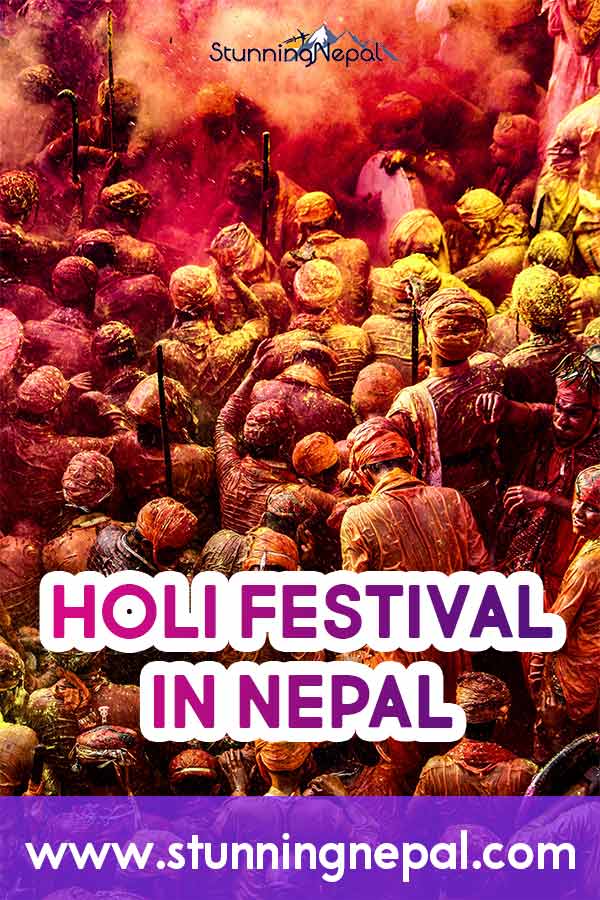
Suraj Katwal
Suraj is a travel enthusiast who believes in finding solace in the heart of nature. He enjoys exploring new destinations, different culture, and encouraging people to travel.
Related Articles...
Halal Restaurants in Kathmandu
Yarsagumba in Nepal: Cost, Benefits of Caterpillar Fungus
Best Thakali Restaurants in Kathmandu
Best Sekuwa Places in Kathmandu
Best Vegan Restaurants in Kathmandu
Best Biryani in Kathmandu
Shivaratri Wishes: 50+ Best Wishes in English & Nepali
Maha Shivaratri Festival in Nepal
2 thoughts on “Holi Festival in Nepal”
It is a very very interesting article. Totally unique. Thanks a lot, sir
Welcome !!!
Leave a Comment Cancel reply
About stunning nepal.
Stunning Nepal is a travel blog that intends to provide travel tips, references & guides, things to do & also your guide for hiking & trekking in Nepal.
Travel Guide
Things To Do
Trekking in Nepal
Privacy Policy
Get in Touch
Stunning Nepal
Address: Dhanawantari Marg, Kathmandu 44600, Nepal
+977-9808211139
© 2024 Stunning Nepal. All Rights Reserved

Culture and Festivals
Holi festival in nepal.
Holi is not just a festival of colour in Nepal. Holi festival means the end of the cold winter nights in Nepal and the arrival of the beautiful spring season where there is greenery all over the nation.
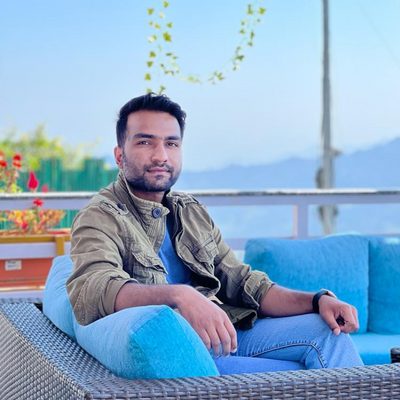
Holi, often known as the "Festival of Colors," is a colorful and exuberant Hindu festival celebrated with zeal and enthusiasm throughout the Indian subcontinent and Nepal. It represents the triumph of virtue over evil, the arrival of spring's flowering beauty, and the promotion of community cooperation and friendship. Holi, which happens on the last full moon day of the Hindu lunar month of Phalguna, generally in March, signals the end of winter and the beginning of spring, a season full of color and vibrancy.
Holi festival has a special appeal in Nepal, a nation rich in traditions and culture. Aside from the religious importance associated with Hindu mythology, the Nepalese celebration reflects the country's unique cultural mix. While all age groups enjoy the celebrations, the youngsters are especially passionate, smearing each other with colorful powders, hurling water balloons, and participating in traditional songs and dances. The event emphasizes the feeling of togetherness, love, and joy via this riot of colors and activities, eliminating social divisions and establishing a sense of communal harmony.
Join us on a colorful trip across the breathtaking landscapes of Nepal to discover the myriad colours of the Holi festival, a celebration that transcends mere colors, weaving together tales of history, mythology, and the colourful fabric of Nepalese culture .
Importance of Holi in Nepal
Holi festival in Nepal reflects the country's vibrant cultural, spiritual, and agricultural fabric. It is a time of happiness and unity, when the nation celebrates life, love, and the enduring spirit of community harmony.
Cultural Unity and Harmony:
In Nepal's multiethnic landscape, the Holi festival is a significant event that promotes unity and harmony among diverse communities. As people gather together to celebrate, caste, creed, and ethnic distinctions vanish, paving the way for cultural exchange and camaraderie. As people visit their friends and family to play with colors and share celebratory treats, the festival promotes friendship and benevolence.
Spiritual Resonance:
Holi is spiritually anchored in Hindu mythology, symbolizing the triumph of virtue over evil. The story of the demon monarch Hiranyakashipu and his son Prahlada, a devout devotee of Lord Vishnu, is one of the legends associated with Holi. Each time Hiranyakashipu tries to murder Prahlada, Vishnu saves him, demonstrating the protective power of divine forces. The conflagration ceremony known as 'Holika Dahan' commemorates the burning of the demon Holika, who attempted to murder Prahlada, signifying the victory of faith and devotion over demonic forces.
Agricultural Relevance:
Holi is celebrated in Nepal , a country with agrarian origins, to commemorate the end of winter and the advent of spring – a time of rebirth and renewal. The festival coincides with the harvesting of the winter crop, and it's a time when farmers exult and honor the gods for a bountiful harvest. The riot of colors at the festival represents the various tints of the springtime, when blossoms flourish and fields are prepared for sowing the new produce.
Preserving Traditions and Customs:
Holi in Nepal is not limited to the use of colored powders. The festival is intricately interwoven with numerous traditional customs and rites. In various regions of Nepal, communities commemorate the festival in distinctive ways, preserving age-old traditions and folklore. These customs frequently involve traditional melodies, performances, and rituals that transmit Nepal's rich cultural heritage from generation to generation.
Tourist Attraction:
Holi has emerged as a major tourist attraction in Nepal in recent years. The celebrations, which are characterized by music, dance, and a kaleidoscope of colors, attract travelers from around the globe. Tourists flock to the streets of Kathmandu and Pokhara to immerse themselves in the festive atmosphere, photographing the vibrant moments and participating in community celebrations, thereby promoting cultural tourism in the nation.
Purpose of Our Blog
In a world where cultures are broad and different, festivals like Holi connect people together by providing insights into rich history and vitality traditions and customs. We hope to go on a bright journey that digs deep into the spirit of the Holi celebration as celebrated in Nepal's magnificent landscapes through this blog. Our mission is multifaceted, and we've outlined the objectives that are driving this colorful adventure below:
1. Documentation and Preservation of Cultural Heritage:
This blog aims to chronicle the rich cultural traditions that characterize Holi festivities in Nepal by capturing the many aspects of the festival. Its goal is to preserve these stories for future generations, building a strong respect for Nepal's cultural legacy.
2. Educational Resource:
This site aims to be a thorough resource for anybody interested in learning about the unique customs and significance of the Holi celebration in Nepal. We hope to provide readers with a comprehensive grasp of the festival's historical, cultural, and spiritual components via rich observations and anecdotes.
3. Tourism Promotion:
The blog attempts to showcase Nepal as a dynamic tourism destination, particularly during the Holi season, through descriptive words and a vibrant picture trip. We hope that by highlighting the festivities and the social cohesion that the festival generates, we might inspire people to come and experience the cheerful events for themselves, therefore increasing cultural tourism in the nation.
4. Interaction and Community Engagement:
The blog aims to engage the community by providing personal tales and first-hand experiences, inviting readers to submit their own experiences and stories. We intend to establish a community where folks can connect and communicate while celebrating the happy spirit of Holi through interactive aspects such as comments and debates.
5. Celebrating Togetherness and Differences:
At its heart, this site celebrates the Holi festival's harmony and variety. We hope to highlight the magnificent tapestry of unity in variety that characterizes Nepalese society by exploring unique cultures, traditions, and festivities throughout different areas of Nepal.
Table Of Content
Holi festival facts.
| Festival Name | Holi (Fagu Purnima) |
| Festival Time | Late February or March |
| Observed by | Hindus, Newar Buddhists, Jains and other non-Hindus |
| Festival Type | Religious, Spring Festival |
| Festival Date (2024) | Rest of Nepal : 25 March Terai Region: 26 March |
| Legends | Krishna, Vishnu, Kama and Rati |
| Festivities | Holika Dahan, Bonfire, Playing with colours |
| Frequency | Annually Celebrated |
Origin of Holi Festival
Holi is one of the most joyful festivals in Nepal and other South Asian countries. It has its roots in old Hindu traditions and myths, which have been passed down through the years. Here, we talk about the history of this exciting festival:
Ancient References
Scriptural References: The earliest mentions of a festival resembling Holi can be found in ancient scriptures like the ‘Puranas’ and the poems of the 7th-century poet, Harsha. Additionally, the famous Indian play "Ratnavali," written by Harsha, vividly describes the festival's spirit, celebrating love and colors.
Historical Frescos and Art: Historical artifacts, including frescos and paintings, hint at the festival's age-old lineage, often depicting scenes of people engaging in festivities akin to Holi, symbolizing its deep roots in the subcontinent's cultural tapestry.
Mythological Origins
Holika and Prahlada: The most popular legend associated with the origin of Holi is the tale of Holika and Prahlada. According to mythology, Prahlada, a devout follower of Lord Vishnu, was targeted by his father, King Hiranyakashipu, who despised Vishnu. Prahlada's unwavering faith protected him against his father's cruelties, culminating in the burning of the demoness Holika, who was Hiranyakashipu's sister. The festival symbolizes the victory of good over evil and is commemorated by lighting bonfires on the eve of Holi, known as ‘Holika Dahan’.
Lord Krishna's Playful Antics: Another significant mythological reference is associated with Lord Krishna, who is said to have popularized the playful coloring during Holi. The playful and mischievous nature of Krishna, where he played pranks by throwing colored water and powders on his beloved Radha and other gopis, has been emulated as a significant part of Holi celebrations, fostering love and togetherness.
Cultural Integration
Integration with Local Customs: Over the centuries, Holi has integrated various local customs and traditions from different regions, making it a multifaceted celebration that embodies unity in diversity. In Nepal, it has absorbed distinct Nepalese traditions, and each community adds its unique flavor to the festival.
Influence on Literature and Arts: The festival has found profound reflections in literature, poetry, and arts over the centuries. Numerous poems, stories, and paintings have depicted the vibrancy and joyous spirit of Holi, testifying to its deep-rooted influence on the cultural and artistic avenues of the region.
As we trace the vibrant lineage of Holi, it unfolds as a rich tapestry woven with threads of faith, love, and communal harmony. This festival, steeped in legend and history, continues to be a beacon of joy, bringing people together in a joyous celebration that transcends boundaries and fosters unity.
How is the Holi Festival Celebrated in Nepal?
Holi in Nepal has grown and metamorphosed over centuries, absorbing various cultural, social, and regional influences. Let's take a journey through time to witness how this vibrant festival has evolved in the picturesque landscapes of Nepal:
Early Beginnings
Vedic Connections: Initially, the festival had connections to the Vedic period, where it was seen as a festival of fertility and harvest, celebrated with rituals and prayers for a bountiful season.
Royal Endorsements: Historically, Holi celebrations were grand events patronized by the royal families of Nepal. The royal endorsement further entrenched the festival's significance within Nepali society, with grandeur and magnificence characterizing the celebrations.
Middle Ages
Cultural Synthesis: As Nepal navigated through the middle ages, the festival absorbed a synthesis of Indo-Aryan and Tibeto-Burman traditions, encapsulating a diverse range of customs, rituals, and festivities.
Literary Depictions: Many Nepali literary works from the middle ages offer vivid portrayals of Holi celebrations, indicating its pervasive influence in society. Artists and poets were often inspired by the festival, weaving tales and paintings that centered around the joyous celebrations of Holi.
Modern Times
Community Celebrations: In modern times, the festival has moved beyond the royal courtyards to the streets and alleys of Nepal, becoming a mass celebration that brings communities together. From children to elders, everyone participates in the festivities, smearing colors on each other and sharing sweets and delicacies.
Tourism and Global Recognition: Today, the festival has also become a significant tourist attraction. Tourists from around the world flock to Nepal to witness and partake in the vibrant celebrations, thus giving Holi a global recognition. The Nepali government and local organizations often arrange special events and programs to showcase the festival's rich cultural hues to the world.
Contemporary Innovations
Environmental Concerns: In recent years, there has been a growing emphasis on celebrating an eco-friendly Holi. Initiatives are being taken to use organic colors, minimize water wastage, and create awareness about the environmental implications of the festival.
Art and Music Fusion: Contemporary celebrations often feature a fusion of traditional and modern elements. While traditional songs and dances continue to be an integral part of the celebrations, modern music genres and art forms have found a place in the festivities, attracting the younger generation to be a part of the cultural extravaganza.
Through the corridors of time, Holi in Nepal has evolved to become a festival that epitomizes unity, love, and joy. As we look forward to the future, the festival promises to continue its vibrant journey, adapting and integrating new elements while retaining its traditional essence and charm.
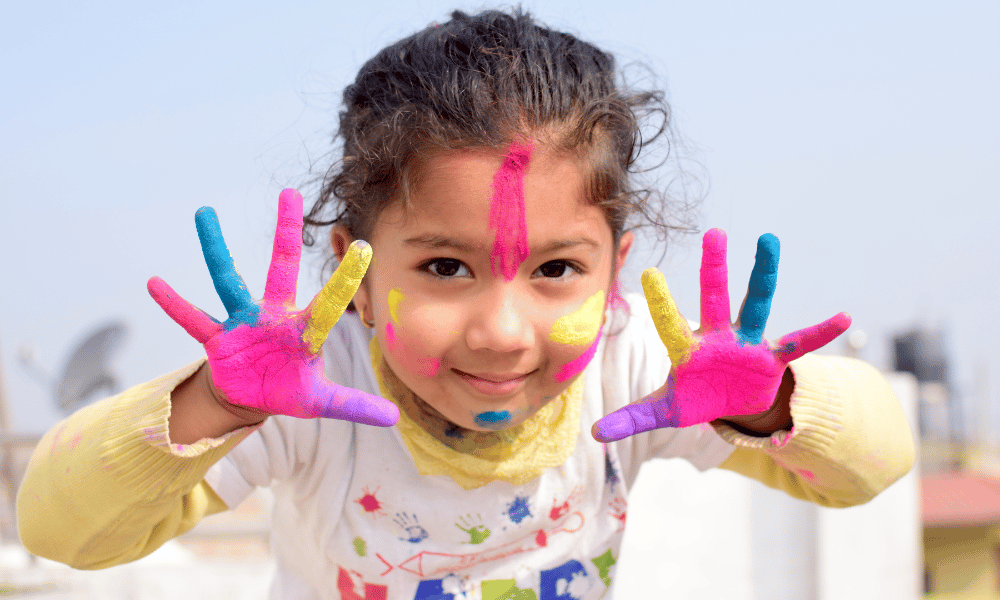
Spiritual Significance of Holi Festival
Holi is not just a festival of colors but a celebration that holds deep cultural and spiritual significance. In this section, we shall explore the profound meanings and traditions that encompass the vibrant festival of Holi in Nepal.
Spiritual Significance
Purification and Renewal
Inner Purification: Holi is often seen as a time of inner purification. The burning of the Holika bonfire symbolizes the burning of inner impurities, allowing individuals to start anew, with renewed energy and purity.
Spiritual Renewal: The festival encourages individuals to let go of past grievances and negative energies, fostering spiritual renewal and positive beginnings.
Community Bonding
Unity and Brotherhood: Holi fosters a spirit of community bonding, as people come together, forgetting differences and indulging in joyous celebrations.
Spread of Love and Compassion: The playful exchange of colors serves as a medium to spread love and compassion, encouraging individuals to embrace each other with warmth and affection.
Relation to Hindu Mythology
Legend of Prahlada
Victory of Good over Evil: The legend of Prahlada and Hiranyakashipu, central to the Holi festival, embodies the victory of good over evil, highlighting the protective grace of the divine forces.
Faith and Devotion: The story of Prahlada also emphasizes the significance of unwavering faith and devotion, which triumphs over adversarial forces.
Krishna-Radha Romance
Celebration of Divine Love: The playful antics of Krishna with Radha and the gopis symbolize the celebration of divine love, where colors become a medium of expressing affection and joy.
Spirit of Playfulness: The Krishna-Radha narrative brings forth the spirit of playfulness and joy, encouraging individuals to shed inhibitions and revel in the festive spirit.
Symbolism of Colors
Representation of Nature's Hues
Spring Blossoms: The vibrant colors of Holi represent the blossoms of spring, symbolizing nature's renewal and the beginning of a new agricultural cycle.
Harmony with Nature: The diverse hues used during Holi encourage individuals to harmonize with nature, appreciating the beauty and vibrancy that nature offers.
Psychological and Emotional Resonance
Joy and Happiness: The bright colors, often associated with joy and happiness, uplift the spirit, encouraging individuals to immerse themselves in the festive mood.
Healing and Rejuvenation: The festival, with its riot of colors, serves as a time for healing and rejuvenation, allowing individuals to break free from the monotony of daily life and celebrate with gusto and enthusiasm.
The cultural significance of Holi transcends beyond the play of colors, embodying deep spiritual meanings, mythical narratives, and a beautiful canvas of vibrant hues that mirror life's beauty and diversity. As we delve deeper into the festival's essence, it unfolds as a rich celebration that nurtures community bonds, spiritual growth, and a deep appreciation for the vibrant tapestry of life.
Cultural Importance of Holi Festival
Nepal's Holi holiday is more than just a chance to play with bright colors. It is also an important part of the country's culture. Holi has its roots in Hindu lore and faith. It is a celebration of Nepal's rich history and community. Holi brings the whole country to life with bright colors and happy parties. It also marks the beginning of spring, which is a time of rebirth and growth. Holi encourages people to put aside their differences and come together in a spirit of peace and friendship through the different and unique traditions and customs that are practiced in different parts of Nepal. From traditional songs and dances to the sharing of delicious foods, the festival shows what Nepalese culture is all about. It is a rich experience that combines spiritual meaning with joyful community events.
A Mosaic of Traditions
Holi is a reflection of the rich cultural mosaic that Nepal embodies. The festival, through its vibrant celebrations, showcases the beautiful interplay of traditions, customs, and beliefs that are intrinsic to Nepalese society.
Regional Variations
Diverse Celebrations: In Nepal, the celebration of Holi varies across different regions, with each region adding its distinct flavor to the festival, making it a truly diverse and enriching experience.
Integration of Various Traditions: Over time, the festival has assimilated various traditions and customs, representing the unity in diversity that characterizes Nepalese society.
Strengthening Community Ties
Social Harmony: Holi serves as a platform to strengthen community ties. It fosters social harmony as people from all walks of life come together to celebrate, transcending social and economic barriers.
Reconciliation and Forgiveness: The festival encourages individuals to reconcile with others, letting go of past disputes and embracing each other with a spirit of forgiveness and camaraderie.
Fostering Friendships
Building New Relationships: Holi is a time where new friendships are fostered. The open-hearted celebrations provide a platform for people to interact, bond, and build new relationships.
Interactions Across Generations: The festival sees participation from all age groups, encouraging interactions across generations, and fostering a sense of community and togetherness.
Celebration of Spring
Welcome to the Spring Season
Agricultural Significance: Historically, Holi has been linked to the agricultural cycle, marking the end of winter and the onset of the spring season, a time of harvest and hope.
Connection with Nature: The festival encourages individuals to connect with nature, celebrating the blossoms of spring through vibrant colors that mirror the hues of the blossoming flowers.
Joyous Expression of Life
Celebration of Life's Vibrancy: The festival embodies a joyous expression of life, encouraging individuals to immerse themselves in the vibrant energies that the spring season brings, marking a time of renewal and rejuvenation.
Creativity and Artistic Expression: Holi fosters creativity and artistic expression, as people indulge in crafting colorful rangolis, preparing delicious delicacies, and engaging in song and dance, celebrating life in its most vibrant form.
The cultural significance of Holi in Nepal is a multifaceted celebration that embodies community bonding and the joyous welcoming of spring. It reflects the rich cultural tapestry of Nepal, fostering unity, love, and a deep appreciation for the vibrant nuances of life.
Holi Festival Preparation
The beauty of the Holi festival is perhaps most vividly captured in the lead-up to the main event, where the atmosphere buzzes with excitement and anticipation. In this section, we turn our focus to the preparation phase which sees communities coming together to gear up for the grand celebration.
Preparation
Cleaning and Decorating Homes
Spring Cleaning: As part of the preparation, families indulge in spring cleaning, giving their homes a fresh and vibrant look to welcome the festival.
Decorative Rangolis: Many households adorn their entrances with colorful rangolis, a traditional form of art that uses colored powders to create intricate designs and patterns.
Community Engagements
Community Meetings: In the lead-up to the festival, community meetings are often organized to plan the festivities, fostering a spirit of cooperation and unity.
Preparation of Bonfires: Preparations for the Holika Dahan involve gathering wood and other materials for the bonfires that symbolize the victory of good over evil.
Shopping and Gathering of Materials
Buying Colors and Water Guns
Markets Abuzz with Activity: Markets become a hub of activity as people throng to buy colors, water guns, and other items essential for the celebration.
Variety of Colors: Shops stock up on a variety of colors, including powders and water-soluble colors, to cater to the enthusiastic crowd ready to indulge in the color play.
Clothing and Accessories
Traditional Attire: Many opt to buy new clothes for the occasion, with traditional attire taking center stage during the celebrations.
Protective Accessories: Alongside, shops also offer protective accessories such as sunglasses and scarves to help revelers protect themselves during the boisterous celebrations.
Making of Special Delicacies
Culinary Delights
Sweets and Savories: The festival is incomplete without an array of sweets and savories. Families come together to prepare traditional delicacies that are shared among neighbors and friends.
Special Holi Dishes: In Nepal, special dishes like gujia, a sweet dumpling made of wheat flour with a stuffing of sweet ingredients, become a staple during the festival.
Drinks and Refreshments
Thandai: A special drink called Thandai, often mixed with Bhang, is a popular beverage enjoyed during Holi. It is made with a mixture of almonds, fennel seeds, watermelon kernels, rose petals, pepper, vetiver seeds, cardamom, saffron, milk, and sugar.
Refreshing Drinks: Apart from Thandai, households prepare a variety of refreshing drinks to cater to the guests, helping them to cool off amidst the spirited celebrations.
In this vibrant phase, the whole community comes alive with a kaleidoscope of activities, transforming the region into a canvas of joy and celebration. From shopping sprees to culinary preparations, the festivities foster a sense of unity and excitement, setting the stage for a memorable Holi celebration.
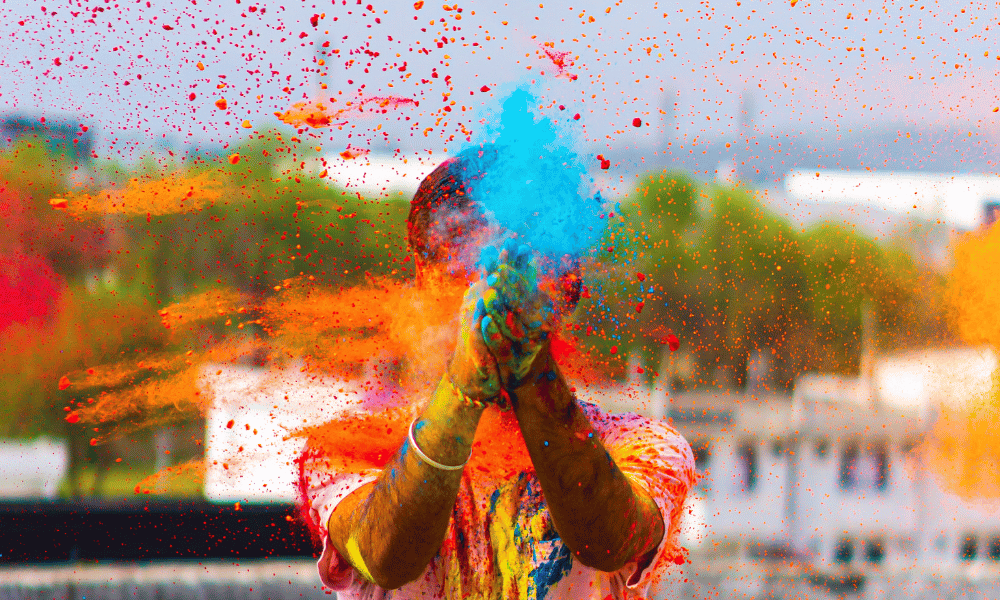
Main Events During the Holi Festival
The heartbeat of the Holi festival lies in its main events, each carrying a unique traditional significance and bringing communities together in a joyous and vibrant celebration. In this section, we delve into the key events that mark the Holi festival in Nepal, exploring the stories, rituals, and traditions that encompass them.
Holika Dahan: The Burning of the Holika
Symbolism of Holika Dahan
Victory of Good over Evil: The ritual signifies the victory of good over evil, with the burning of the Holika representing the destruction of negative forces and the triumph of positivity.
Purification Ritual: It also serves as a purification ritual, encouraging individuals to let go of negativity and embrace new beginnings with purity of heart and mind.
Gathering of Communities: Communities come together to gather wood and other materials to create a bonfire, symbolizing the burning of Holika.
Prayers and Offerings: The evening witnesses prayers and offerings, with individuals seeking blessings for prosperity and protection from evil forces.
Lathmar Holi: The Play with Sticks and Shields
Historical Background
Radha and Krishna: This tradition traces back to the playful antics of Radha and Krishna. It is believed that Krishna teased Radha and her friends, who responded by playfully hitting him with sticks.
Representation of Playfulness: This event captures the spirit of playfulness and joy that characterizes the romantic tales of Radha and Krishna.
The Celebration
Women versus Men: In this vibrant event, women playfully hit men with sticks, who defend themselves with shields, engaging in a friendly mock battle.
Music and Dance: Accompanying the playful battles are music and dance, adding to the festive spirit and joyous atmosphere.
Phagu Purnima: The Celebration with Colors
Significance
Welcoming Spring: This event marks the welcoming of the spring season, a time of joy, renewal, and blossoming of nature.
Community Bonding: It fosters community bonding, as individuals indulge in playful exchanges of colors, coming together in a spirit of unity and togetherness.
Celebration Details
Color Play: Streets come alive with people smearing each other with vibrant colors, engaging in a joyous celebration that breaks barriers and fosters friendships.
Water Games: Apart from colors, water games are a popular part of the celebration, with people playfully dousing each other with water.
Chir Haran: The Ritual of Tree Worship
Historical Roots
Ancient Tradition: This is an ancient tradition that honors nature, embodying the deep-seated reverence for trees and the environment that is intrinsic to Nepalese culture.
Connection with Lord Krishna: The ritual also connects with the tales of Lord Krishna, symbolizing his playful nature and deep connection with nature.
Gathering Around Trees: Communities gather around trees, engaging in prayers and rituals that seek to honor and worship the trees.
Offerings and Decorations: The trees are adorned with colorful decorations and offerings, embodying the spirit of respect and reverence for nature.
The main events of the Holi festival in Nepal are a vibrant tapestry of rituals and celebrations that embody the rich cultural and spiritual heritage of the region. From playful exchanges to solemn rituals, these events capture the essence of Holi, bringing communities together in a joyous and harmonious celebration.
Special Attractions of Holi Festival
A true embodiment of the festive spirit of Holi can be witnessed in the myriad special attractions that grace the occasion. From pulsating musical events to captivating dance and art performances, these attractions add a touch of glamour and festivity, turning the celebration into a grand spectacle. Let’s explore these vibrant attractions in detail:
Musical Events
Traditional Music
Folk Music: The Holi festival is accentuated with the resonant tunes of traditional folk music, echoing the rich musical heritage of Nepal. Groups of musicians wander through the streets, filling the air with melodious tunes that signify the festive spirit.
Bhajans and Kirtans: Devotional songs, known as Bhajans, and Kirtans are an integral part of the celebration. These spiritual renditions evoke a sense of devotion and reverence during the festival.
Contemporary Music
Live Concerts: As the festival transcends into a modern celebration, live concerts featuring contemporary artists become a highlight. These concerts become a melting pot where traditional and modern music genres coalesce.
DJ and Electronic Music: To cater to the younger generation, DJ nights and electronic music sessions are organized, where people groove to the beats and celebrate Holi in a more contemporary style.
Dance and Art Performances
Traditional Dance
Classical Dance Performances: The festival witnesses spellbinding performances of classical dances, portraying tales from Hindu mythology and reflecting the rich cultural tapestry of Nepal.
Folk Dance: Different communities showcase their unique folk dances, turning the festival into a vibrant and lively showcase of cultural diversity.
Art Installations and Exhibitions
Street Art: The festival sees an emergence of vibrant street art, with artists using the streets as their canvas to depict the vibrant hues of Holi.
Art Exhibitions: Various art exhibitions are organized, showcasing the works of local artists who draw inspiration from the festival, creating artworks that echo the spirit of Holi.
The special attractions during the Holi festival in Nepal serve as a testament to the vibrant and rich cultural heritage that the country embodies. These events provide an avenue for artists and performers to showcase their talents, turning the festival into a grand cultural extravaganza.
Holi Festival in Kathmandu
The celebration of Holi in Nepal is a kaleidoscope of vibrant customs, rituals, and festivities, which vary distinctively across different regions. In this section, we venture into the heart of Nepal, Kathmandu, to witness how the festival is celebrated with a blend of tradition and modernity, highlighting the popular spots and traditional customs that define Holi in the capital city.
Traditional Customs
Holika Dahan at Kathmandu Durbar Square: Kathmandu, steeped in history and tradition, celebrates Holi with ancient customs. The celebration begins with the Holika Dahan at Kathmandu Durbar Square , where people gather to witness the symbolic burning of Holika, marking the victory of good over evil.
Chir Haran at Basantapur: The historic Basantapur area witnesses the ritual of Chir Haran, a unique tradition that involves tree worship and offerings, echoing the deep connection between the festival and nature.
Popular Spots for Celebrations
Thamel: Recognized as the heart of Kathmandu, Thamel turns into a vibrant hub during Holi, attracting locals and tourists alike. The streets are adorned with colors, and the air reverberates with music, as people indulge in playful exchanges of colors and water.
Durbar Square: This UNESCO World Heritage Site becomes a focal point for cultural festivities. With traditional music and dance performances, the square turns into a vibrant space where tradition meets modernity.
Patan and Bhaktapur: Apart from Kathmandu, the neighboring cities of Patan and Bhaktapur also host grand Holi celebrations. The cities, known for their rich cultural heritage, witness an amalgamation of traditional and contemporary celebrations, making them popular spots for experiencing Holi.
You can further explore how the Holi festival is celebrated in other regions of Nepal, showcasing the diversity and richness that marks the celebration across the country. You can detail the unique customs, traditions, and popular spots that make Holi a unique experience in each region.
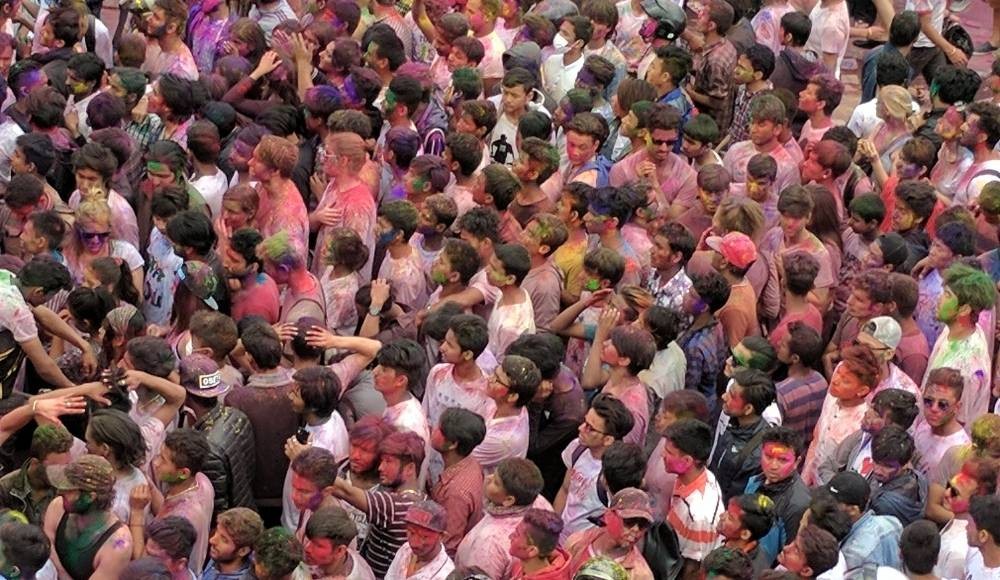
Holi in Terai Region of Nepal
Nestled in the southern part of Nepal, the Terai region is home to a vibrant and diverse culture. When it comes to Holi, the region boasts an array of unique traditions and customs that provide a different hue to the festival. Let’s unfold the distinct ways in which the people of Terai celebrate Holi:
Time-Honored Celebration: In the Terai region, Holi, also known as Faguwa, is celebrated with much fervor and gusto, keeping with time-honored traditions that have been passed down through generations.
Extended Celebrations: Unlike other regions, Holi celebrations here extend over two days. The first day is marked by the Holika Dahan, and the festivities continue to the next day with color play.
Rituals and Prayers
Morning Prayers: The day starts with morning prayers and rituals. Families gather to offer prayers, seeking blessings for prosperity and well-being.
Community Gatherings: The region witnesses community gatherings where people come together to participate in prayers and rituals, fostering a spirit of unity and harmony.
Exchange of Wishes and Delicacies
Exchange of Wishes: One of the remarkable aspects of Holi in the Terai region is the warm exchange of wishes among neighbors, friends, and families. People visit each other’s homes, exchanging greetings and good wishes.
Delicious Delicacies: The festival is also an occasion to savor a variety of delicious delicacies. Special sweets and dishes are prepared, which are exchanged among neighbors and friends, adding a gastronomic delight to the celebration.
Cultural Performances
Folk Music and Dance: The festival is marked by vibrant performances of folk music and dance. Local artists showcase their talent, turning the celebration into a vibrant cultural extravaganza.
Community Events: Several community events are organized where people come together to enjoy musical performances, dances, and other cultural displays, adding to the festive spirit.
The Terai region offers a rich and vibrant tapestry of traditions and customs during Holi, providing a unique and colorful perspective to the festival’s celebrations in Nepal. The region, with its distinctive customs, adds a special charm to the Holi festivities, embodying the spirit of unity, joy, and cultural richness.
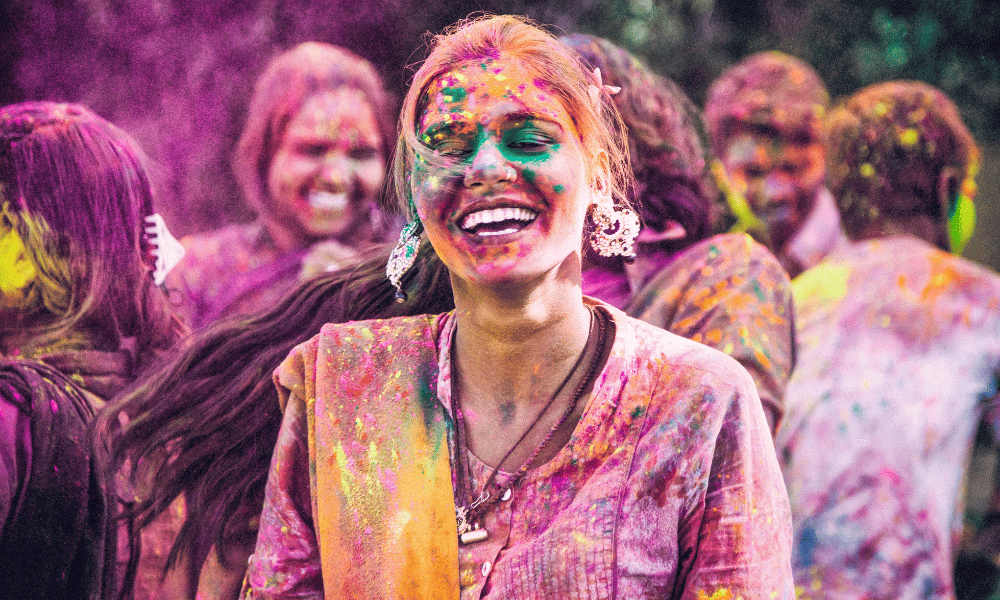
Holi Festival in Pokhara
Pokhara is a great place for tourists to visit because it is next to the peaceful Phewa Lake and has a great view of the Annapurna range. It also has a lot of culture and natural beauty. People often call this city the "tourist capital" of Nepal. Its Holi celebrations are a beautiful mix of old and new, making them a sight to see. Let's look at the different ways Holi is celebrated in Pokhara:
Lakeside Holi
Scenic Celebrations: The area around Phewa Lake transforms into a vibrant canvas of colors during Holi. Locals and tourists gather around the lake to enjoy the scenic celebrations, where the natural beauty provides a picturesque backdrop to the festivities.
Boat Rides: Special boat rides are organized where people can enjoy the festivities from the serene waters, offering a unique and tranquil experience amidst the vibrant celebrations.
Street Festivals
Colorful Parades: The streets of Pokhara come alive with colorful parades, where locals and tourists join in a vibrant procession, dancing to the tunes of traditional music and reveling in the joyous atmosphere.
Street Art and Performances: Artists take to the streets to create vibrant artworks and offer live performances, adding a creative touch to the festival.
Cultural Shows and Events
Traditional Dance Performances: Cultural shows become a highlight of the celebration, with groups offering mesmerizing dance performances, showcasing the rich cultural tapestry of the region.
Music Concerts: Music concerts featuring local bands and artists are organized, where people can groove to the beats and enjoy a musical extravaganza.
Community Engagement
Community Feasts: The celebration sees community feasts where people come together to enjoy a range of traditional delicacies, fostering a spirit of unity and harmony.
Tourist Engagement: Being a tourist capital, special events are organized to engage tourists, offering them an opportunity to immerse themselves in the local culture and festivities.
Holi is celebrated in Pokhara, which shows that the city has a rich cultural history and a modern, open-minded attitude. The celebrations here are not only true to the traditional spirit of Holi, but they also include elements from around the world. This makes it a unique and memorable event for both locals and tourists.
A well-prepared guide can make the Holi festival in Nepal more enjoyable for people who want to see its beauty. In this part, we tell travelers what they need to know to get the most out of their trip during this busy event.
Best Time to Visit
When the Hindu lunar calendar is in the month of Falgun, which is usually in March, is the best time to take part in the colorful Holi celebrations in Nepal. This time marks the change from winter to spring, and it's a beautiful time to celebrate because flowers are blooming and the sky is clear. People should come a few days before the event to see and be a part of the lively and exciting preparations. The event lasts for two days, and the celebrations in the hilly areas and in the Terai region are very different. To get the most out of Holi in Nepal, plan your trip to overlap with the celebrations in different parts of the country. This will give you a unique look into the diverse cultural fabric of this lively country and let you soak up the festival's joyful spirit among growing nature and happy locals.
Holi Date Variation
Lunar Calendar: Holi is celebrated based on the lunar calendar, generally falling in the month of March. However, the exact date varies each year. It's recommended to check the specific date before planning your visit.
Weather Considerations: March marks the beginning of spring in Nepal, offering pleasant weather which is neither too hot nor too cold, making it an ideal time to participate in the outdoor festivities of Holi.
Travel Arrangements
Advance Bookings
Flights and Accommodation: Given the surge of visitors during the festival, it is advisable to book flights and accommodation well in advance to avoid last-minute hassles and price surges.
Local Transportation: Secure your local transportation arrangements beforehand, as the demand for vehicles and guides may increase during the festive season.
Tour Packages
Festival Special Packages: Many travel agencies offer special Nepal tour packages designed around the Holi festival, providing a guided experience of the celebrations in various regions.
Customized Tours: For those looking for a personalized experience, customized tours can be arranged to include specific attractions and events during the Holi festival.
Safety and Etiquette
Respecting Local Customs
Participation in Rituals: While participating in rituals and events, it's important to show respect towards local customs and traditions. Following the guidance of locals can enhance your experience.
Dress Code: Adhering to a modest dress code during the festivities is appreciated, to respect the local culture.
Safety Measures
Protecting Your Belongings: During the festivities, ensure to safeguard your belongings, as the celebrations can get quite boisterous.
Skin and Eye Protection: Given the use of colors during the festival, taking necessary precautions to protect your skin and eyes is recommended.
Photography and Videography
Seeking Permission
Photographing Locals: Before photographing locals, especially during religious rituals, it is courteous to seek their permission.
Drone Photography: If planning to use drones for photography, make sure to adhere to local regulations and guidelines.
Capturing the Moments
Festival Photography Tours: Many agencies offer photography tours, guiding you to the best spots to capture the vibrant moments of the festival.
Community Engagement: Engaging with the local community can provide deeper insights and opportunities for authentic and heartwarming photographs.
Being well-prepared can greatly enhance your Holi experience in Nepal, allowing you to immerse yourself fully in the vibrant and joyous celebration, while respecting and appreciating the rich cultural tapestry of the country.
Participating in the Festival
Holi in Nepal isn't just about seeing the bright colors and happy mood; it's also about getting into the spirit of the festival and joining in with the locals as they celebrate. In this area, we give tips and ideas for travelers who want to take part in the Holi festival, so they can have a real and meaningful experience.
Getting Involved
Community Gatherings
Local Communities: Engage with local communities by participating in community gatherings where you can join locals in the celebrations, playing with colors, and enjoying traditional music and dances.
Cultural Programs: Many regions organize cultural programs where visitors can witness traditional performances and even participate in dance and music events.
Volunteer Opportunities
Community Service: Some organizations offer volunteer opportunities where travelers can assist in organizing community events and festivities, providing a deeper understanding of the festival’s significance.
Art and Craft Workshops: Participate in art and craft workshops organized by local communities, where you can learn about the traditional art forms associated with the festival.
Celebrating Responsibly
Using Eco-Friendly Colors
Environmentally Friendly: Opt for eco-friendly colors available in the market to celebrate Holi, promoting a healthier and safer environment.
Personal Care: Ensure to use skin-friendly colors to avoid any skin irritations or allergies.
Respectful Engagement
Consent is Important: When playing with colors, always ensure to seek consent from others, promoting a respectful and enjoyable atmosphere for all.
Avoiding Wastage: While enjoying the water fights that are a part of the festival, be mindful to avoid wastage of water, adhering to the principles of responsible celebration.
Learning and Experiencing
Cooking Classes
Traditional Delicacies: Attend cooking classes where you can learn to prepare traditional delicacies associated with Holi, adding a gastronomic delight to your experience.
Home Hosted Meals: Experience the warmth of Nepalese hospitality by enjoying home-hosted meals, where you can savor traditional dishes and interact with local families.
Workshops and Seminars
Cultural Understanding: Participate in workshops and seminars organized by cultural centers, offering insights into the historical and cultural significance of the festival.
Language Classes: Attend language classes to learn basic Nepali phrases, enhancing your interaction with the locals and enabling a more immersive experience.
Actively participating in the Holi festival allows travelers to not just witness, but to truly experience the vibrant culture and traditions of Nepal. By engaging responsibly and immersively, one can take back memories and experiences that are both enriching and heartwarming.
Dos and Don'ts While Celebrating Holi Festival
When people go to Nepal to see and take part in the fun Holi events, it's important to remember that there are certain rules that should be followed. Here is a short list of "Dos and Don'ts" that will help you enjoy the event in a responsible and polite way.
1. Dress Appropriately
Traditional Attire: Consider wearing traditional attire to blend in and show respect to the local culture.
Old Clothes: It is advisable to wear old clothes as they are likely to get stained with colors during the celebrations.
2. Protect Your Valuables
Water-Resistant Covers: Use water-resistant covers for your mobile phones and other valuable items to protect them during the color play.
Secure Staying Place: Ensure to secure your valuables at your staying place before heading out to participate in the festivities.
3. Use Eco-Friendly Colors
Safe for Skin: Opt for colors that are safe for the skin to prevent allergic reactions and other skin issues.
Environment-Friendly: Choose colors that are eco-friendly to avoid causing harm to the environment.
4. Engage with the Local Community
Community Events: Participate in community events to gain a deeper insight into the cultural significance of the festival.
Learning Local Traditions: Engage with locals to learn about the traditions and rituals associated with the festival.
1. Don’t Force Participation
Consensual Color Play: Do not force anyone to participate in the color play. Always seek consent before applying colors to someone.
Respect Personal Space: Be respectful of personal boundaries and avoid engaging in activities that may make others uncomfortable.
2. Don’t Waste Resources
Avoid Water Wastage: Be mindful of water usage during the festival to avoid unnecessary wastage.
Minimize Plastic Use: Try to minimize the use of plastic items during the celebrations to reduce environmental impact.
3. Don’t Engage in Unsafe Practices
Avoid Harmful Substances: Do not use colors with harmful substances that can cause skin irritations or allergies.
Avoid Rowdy Behavior: Steer clear of engaging in rowdy behavior that could potentially cause harm or discomfort to others.
4. Don’t Violate Cultural Norms
Respect Religious Sites: Show respect towards religious sites and avoid indulging in activities that are considered disrespectful.
Follow Local Guidelines: Abide by the local guidelines and regulations that govern the celebrations to ensure a respectful and harmonious environment.
Observing these "Dos and Don'ts" will not only ensure your safety but also help you to enjoy a fulfilling and respectful celebration. Being mindful of your actions and showing respect to the local customs and traditions will go a long way in making your Holi experience in Nepal truly memorable.
As we come to the end of our journey through the rich tapestry of traditions, colors, and joy that make up the Holi festival in Nepal, we can't help but be amazed by the deep cultural richness and community peace that this festival fosters in the heart of the Himalayas.
Reflection on the Festival in Nepal
A Mosaic of Culture and Tradition: The Holi festival in Nepal is a living, breathing mosaic of ancient traditions and contemporary celebrations, binding communities together in a riot of colors and shared joys. It stands as a vivid testament to Nepal's rich cultural heritage, deeply entrenched in spirituality and communal unity.
A Symbol of Renewal and Rejuvenation: Reflecting the vibrant hues of spring, Holi ushers in a time of renewal and rejuvenation. It is a time when the entire nation blossoms, not just with the vibrant flora but with the laughter and unity of its people coming together, transcending boundaries and forging bonds anew.
Embodiment of Unity and Diversity: As we have traversed through the different regions of Nepal, we have witnessed the unique and diverse ways in which Holi is celebrated. It's a poignant reminder of the harmonious blend of diversity and unity that characterizes this beautiful nation, as communities with varied traditions and customs come together to celebrate the essence of life and togetherness.
Invitation to Experience Holi in Nepal
A Personal Invitation to Witness Vibrancy: As we draw this narrative to a close, we extend a heartfelt invitation to you, dear reader, to immerse yourself in the vibrant and joyous celebrations of Holi in Nepal. It is an experience that transcends mere observation, inviting you to become a part of a rich tapestry of culture, tradition, and communal harmony.
Creating Cherished Memories: We invite you to be a part of this magnificent festival, to create cherished memories painted in the vibrant hues of Holi, accompanied by the melodies of traditional songs, the warmth of newfound friendships, and the delightful flavours of Nepali delicacies.
An Invitation to Connect: By experiencing Holi in Nepal, you are not just attending a festival, but forming a profound connection with the land and its people, understanding their joys, their traditions, and their way of life on a deeper level.
The Holi festival in Nepal is a once-in-a-lifetime chance to immerse yourself in a lively and enriching cultural experience. It's a chance to see for yourself how this festival promotes living customs and community unity. We hope to see you at Holi in Nepal, a festival with a lot of colors, happy parties, and deep friendship that will make your heart feel warm and your spirit feel alive.
Frequently Asked Questions
Holi is celebrated with much fervor across Nepal, with variations in customs and traditions in different regions. In Kathmandu, the festivities include a vibrant display of colors, music, and dance. In the Terai region, the celebrations extend with unique traditions and customs, while in Pokhara, the tourist capital, the festival is marked with an amalgamation of traditional and modern celebrations.
Holi is celebrated in the month of Falgun in the Hindu lunar calendar, which generally falls in March. The festival spans over two days, with the first day being celebrated in the hilly regions and the second day in the Terai region.
Holi is a spring festival in Nepal that is important because it shows that good has won over evil and marks the end of winter. It is a time of rebirth, when people come together to celebrate with colors and parties, bringing them closer together and making them feel more at peace with each other.
During Holi, people prepare a variety of special delicacies including sweets like 'Gujiya', 'Malpua' and 'Barfi'. Savoury dishes like 'Dahi Bhalla' are also popular. A special drink called 'Bhang', made from cannabis leaves, is traditionally consumed during the festival, although it's recommended to consume it responsibly.
Tourists participating in the Holi celebrations should dress in old clothes that can be discarded later, protect their valuables, and use eco-friendly colors. They should be mindful of local customs and traditions, engage respectfully with the local community, and adhere to the guidelines outlined in the 'Dos and Don'ts' section of this blog.
Yes, participants should avoid using colors with harmful chemicals, engage in consensual color play, and avoid rowdy behavior to ensure a safe and enjoyable festival experience. It is also advised to keep a watch on personal belongings and to stay in groups to avoid any unwanted situations.
To truly experience the cultural richness of Holi, tourists are encouraged to engage with local communities, learn about the traditions and rituals associated with the festival, and participate in community events. This not only allows for a deeper understanding of the festival but also fosters a sense of unity and harmony.
Tourists are encouraged to participate in the local traditions and customs of Holi. This includes playing with colors, enjoying traditional music and dance, and partaking in the culinary delights that the festival has to offer. It's a wonderful opportunity to immerse oneself in the vibrant culture of Nepal.
BLOGS & TRAVEL STORIES
our first-hand Himalayan travel experience

Travel Guides & Tips
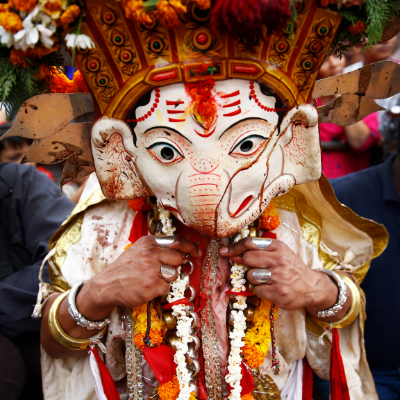
Travel Stories
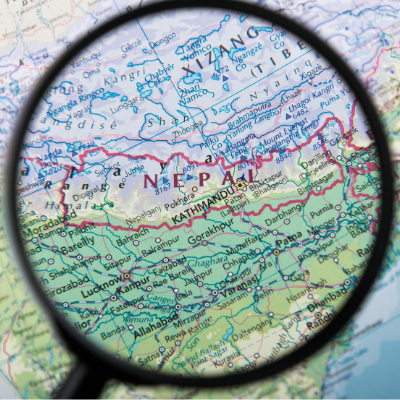
Latest Travel News
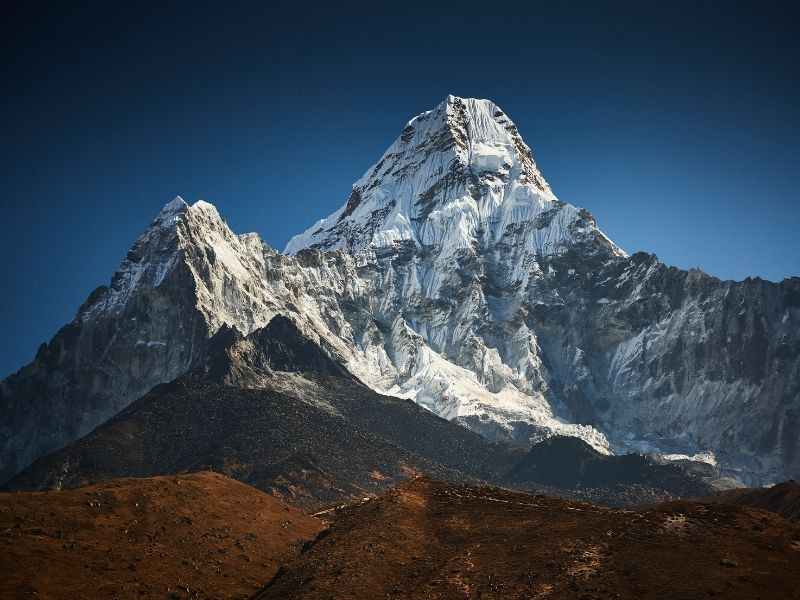
Mount Everest Region

World Heritage Sites
Cookies & privacy policy.
This website uses cookies to improve your experience. Learn More
- Tour Packages
- origin-of-holi-and-its-significance-in-nepali-culture

Origin of Holi and Its Significance In Nepali Culture
The Festival of Colours popularly known as Holi is an ancient Hindu Festival, celebrated mostly in Nepal , India , and some parts of Asia and Europe . The festival has its origin in the Indian subcontinent and signifies the entry of spring season after the winters.
The article below talks in brief about the origin of Holi, its significance in Hinduism and Nepali culture.
What is Holi?
Holi in English generally means the festival of colours, the festival of love, or the festival of spring. The first evening is called Holika Dahan or Chhoti Holi , and the day after that is known as Rangwali Holi, Phagwah, Dhulandi, or Dhuleti .
The festival is celebrated for over 24 hours, starting from the evening of Purnima or Full Moon , that falls in the Hindu month of Phalguna , according to the Vikram Samvat Calendar .
As per the English calendar, Holi falls during the mid of March of every year.
Holi according to Hindu Mythology
There are several reasons why people celebrate Holi in Nepal and India.
Holika Dahan
The most fabled reason behind the celebration of Holi is Holika Dhan or the Burning of Holika . According to chapter 7 of Bhagavata Purana , King Hiranyakashipu was blessed with special powers which rendered him invulnerable to death.
The King of Asuras (demons) was blessed by Lord Brahma and gave him powers by which he couldn't be killed by a human or an animal, neither during the day or nighttime and neither indoors nor outside outdoors. Further, Hiranyakashipu couldn't be killed in land, water, or air and weapons were all ineffective towards him.
Owing to this gift, the emperor grew arrogant and ordered everyone to worship him like God. However, his word was defied by his own son, Prahlada , who was big devotee Lord Vishnu .

Holika possessed a special cloak that protected her from fire, but as the fire roared the cover flew off, and Holika was burned to ashes, while no harm came to Prahlada.
It was then at dusk, Lord Vishnu appeared before King Hiranya, as the Narasimha , half-man and half-lion. Narasimha placed him on his laps at the doorsteps of the palace and killed him with his claws.
The Holika Dahan and Holi represent the win of good over bad.
Story of Lord Krishna
In some parts of India like Braj , the festival is celebrated as Rang Panchami and signifies the love of Lord Krishna and his devotee Radha .
As an infant, Krishna drank the poisonous milk from demoness Putana 's breasts, which later gave him a dark complexion. The lord was unsure whether Rdaha, the fair-complexioned maiden liked him or not.
Mother Yasodha , tired of Krishna's regular questions about his skin and Radha, forces him to ask the question directly and to paint his face any colour she wanted him to be.
Since that day, Radha and Krishna became a couple, and the playful colouring of their faces is remembered as Holi.
Legend of Kama and Rati
The significance is also linked to Lord Shiva according to some Hindu traditions. Shiva was buried in his meditation, away from the worldly woes and had given up his godly duties.
Goddess Parvati was concerned about Shiva and sought the help of the Kamadeva , the Hindu god of love. Kamadeva approaches the God of Destruction and shoots a cupid arrow at him.
The attack breaks Shiva's meditation, which then opens his third eye and burns the God of Love , to ashes. Upon hearing this Parvati and Rati , Kamadeva's wife, both get upset.
Rati then meditates for forty days and begs Shiva for his forgiveness. Impressed by her devotion, Shiva forgives Kamadeva and restores him to his godly form.
Hence the 40th day of Vasanta Panchami is celebrated as Holi, especially in South India.
Significance of Holi
As per the Hindu literature, Holi signifies the victory of good over evil, especially the win of Lord Vishnu over Hiranyakashipu.
This day marks the end of the winter season and the arrival of the spring season. The use of water and holi colours or powders signifies the bright and colourful nature of spring. It is looked upon as the blossoming of love, playing, laughing, forgetting, forgiving, and repairing broken relationships.
Who celebrate Holi?
The festival of colours is famous, mainly in the South-Asian countries where the dominating religion is Hinduism. It is celebrated in most parts of Nepal and India.

Colour of Festival
Holi is observed by Hindus, Sikhs, Jains, Newar Buddhists, and also by people from non-Hindu backgrounds. Owing to the rising popularity of Holi, this festival is celebrated by almost everyone and is marked by throwing colours and water at each other.
Nepal once organised the first-ever Tomatina festival, the La Tomatina Squeeze and Throw Party , in 2014, during the occasion of Holi.
For further information regarding Nepali festivals and booking, please visit, hopnepal.com .
Prepare For Your Trip
Ask for advice.
Exchange tips with travellers on our List & Go forum
Book A Flight
Find the best fares and last-minute deals
Book A Hotel
Rest your weary head between adventures
Book A Travel
Buy comprehensive cover for your next trip
Book A Homestay
Book now and pay when you arrive at the property
- WishesinEnglish
- Birthday Wishes
- Hindi Wishes Shayari
- Nepali Wishes Shayari
- Write for Us
Nibandh Essay on Holi Festival in Nepali language होली – नेपाली निबंध
Find here essay on holi festival in Nepali language. We have posted here holi festival essay in Nepali. Get here essay about holi in nepali language and font.
You have essay on holi in Nepali language, you can send us in [email protected]. Read online free Nepali essay on holi festival of Hindu. We have more Nepali nibandh haru. But now let’s read essay about holi in Nepali language and font.
Nibandh Essay on Holi Festival in Nepali language
होली : नेपाली निबंध
होली (Holi) एक रंगबिरंगा मस्ती भरिएको पर्व (festival) हो । यस दिन सारा मानिस आफनो पुरानोे गुनासाहरु भुली गला लाग्छन् र एक अर्कोलाई अबिर लगाउछन् । बच्चाहरु र युवा रंगहरुले खेल्छन् ।
फाल्गुन मासको पुणिर्माको यो पर्व (festival) मनाउने गरिन्छ । होलीको साथ अनेक कथाहरु जोडिएको छ । होली मनाउने एक रात पहिले होली (Holi) लाई जलाइन्छ । यसको पछाडी एक लोकप्रिय पौराणिक कथा छ ।
भक्त प्रहृलाद (Pralhad) को पिता हरिण्यकश्यप (Hiranyakasyap) स्वयंलाई भगवान मान्दथे । ऊ विष्णुको विरोधी थिए जबकि प्रहृलाद विष्णु भक्त थिए । उनीहरुले प्रहृलाद (Pralhad) को विष्णु भक्ति गर्नाले रोके जब ऊ मानेन तब उनीले प्रहृलाद मार्ने प्रयास गरे ।
प्रहृलाद (Pralhad) को पिताले अन्तत आफनो बहिनी होलिकासँग मदत माग्यो । होलिका (Holika) को आगोमा न जल्ने वरदान प्राप्त थियो । होलिका आफनो भाईलाई सहायता गर्नका लागि तैयार भइसकिन् । होलिका (Holika) प्रहृलादको लिएर चितामा गएर बसिन् तर विष्णुको कृपाले प्रहृलाद (Pralhad) सुरक्षित रहे र होलिका (Holika) जली भस्म भइसकिन् ।
यो कथा (Story) यस कुराको संकेत गर्छ की खराबमा राम्रोको जीत अवश्य हुन्छ । आज पनि पूणिर्मामा होली जलाउँछन, र अर्कोदिन सब मानिस एक अर्कालाई अबिर, अबीर र थरिथरिको रंग (color) दिन्छन् । यो पर्व रंगहरुको पर्व (festival of colors) हो । यस दिन मानिस प्रातस्काल (Morning) उठेर रंगहरुको लिएर आफनो नातेदारहरु (relatives) र मित्रहरुको घर (home) जान्छन् र उनको साथ खुलेर होली खेल्छन् ।
Advertisement
बच्चाहरु (children) को लागि तो यो पर्व विशेष महत्व (importance) राख्छ । ऊ एक दिन पहिले देखि नै बजार (Market) बाट आफनो लागि किसिम किसिमको पिचकारीहरुर गुब्बाराहरु ल्याउँछन । बच्चाहरु गुब्बाराहरु र पिचकारी (Pichkari) ले आफनो मित्रहरुको साथ होलीको आनन्द उठाउछन् ।
If you have essay on holi in Nepali language, you can send us in [email protected]. Read online free Nepali essay on holi festival of Hindu. We have more Nepali nibandh haru. But now let’s read essay about holi in Nepali language and font.
Happy Holi 2022 / Happy Holi 2078. Holi ko Shubhakamana!!!!
Related Posts
Holi shayari in nepali for happy holi 2025 (2081), holi countdown | how many days until holi festival 2025.

18 Latest Holi होली Shayari in Nepali for Facebook Friends

Holi 2024: Top Greeting Cards to Share the Joy of Colors with Loved Ones (48 Images)
Exploring the holi festival with dark aesthetic photography with 40 images.

Holi in Hand: Exploring the Festival of Colors With 73 Images

- Privacy Policy
- Write for Us | The Best Nepali Blog For Guest Posts
© 2023 Wishes, Messages, Travel, Lifestyle, Tips in English, Hindi and Nepali Mount Everest. Legal Support by Quotes .
- Travel, Information And Lifestyle Blog For Nepal & Nepalese People
Hari Nepali 'Bibash'
This blog is about news, political views and recent political issue in Nepal
Embracing Diversity and Joy: The Cultural Tapestry of Holi Festival in Nepal

Nepal, a land of diverse cultures and traditions, comes alive during the vibrant festival of Holi, locally known as "Fagu Purnima." Spanning across regions, communities, and generations, Holi in Nepal is a celebration of unity, joy, and the triumph of good over evil. This essay explores the rich tapestry of the Holi festival in Nepal, delving into its historical roots, cultural significance, diverse rituals, and contemporary celebrations.
Historical and Cultural Significance:
Holi finds its roots in ancient Hindu mythology, particularly the legend of Holika and Prahlad. According to Hindu scriptures, Holika, the sister of the demon king Hiranyakashipu, attempted to burn Prahlad, a devout follower of Lord Vishnu. However, Prahlad's unwavering faith saved him, while Holika perished in the flames. This symbolic victory of righteousness over evil is commemorated during Holi, emphasizing the festival's spiritual essence.
In Nepal, Holi holds multifaceted significance beyond its religious roots. It serves as a cultural bridge, uniting people from various ethnic backgrounds and social strata. Regardless of caste, creed, or age, Nepalese from all walks of life come together to partake in the jubilant festivities, fostering a sense of community and solidarity.
Diverse Rituals and Traditions:
Holi in Nepal is a kaleidoscope of colorful rituals and traditions, each imbued with its unique symbolism and charm. The festivities typically commence with religious observances at temples and shrines, where devotees offer prayers and seek blessings for prosperity and well-being. This spiritual aspect of Holi underscores its significance as a time for renewal and purification.
One of the hallmark rituals of Holi is the playful smearing of colored powders, known as "abeer" or "gulal," on friends, family, and strangers alike. This joyous act symbolizes the breaking down of social barriers and the embrace of unity amidst diversity. As vibrant hues adorn faces and clothing, laughter echoes through the streets, creating an atmosphere of uninhibited merriment.
Water also plays a central role in Holi celebrations, with revelers dousing each other with colored water using buckets, water guns, and balloons. The playful splashing of water not only adds to the festive fervor but also signifies the arrival of spring and the rejuvenation of nature. In some regions, particularly in the Terai belt, Holi is celebrated with fervent enthusiasm, accompanied by traditional folk dances such as "Deuda" and "Khyali."
Another unique aspect of Holi in Nepal is the ritual of "Gai Jatra," which involves the procession of a decorated water buffalo through the streets. This ancient tradition, rooted in folklore and mythology, is believed to bring good fortune and fertility to the community. The sight of the majestic buffalo adorned with colorful garlands evokes a sense of awe and reverence among onlookers, highlighting the diverse customs associated with Holi.
Contemporary Celebrations:
In modern-day Nepal, Holi has evolved into a dynamic and inclusive celebration that transcends religious and cultural boundaries. Urban centers such as Kathmandu and Pokhara witness exuberant Holi parties and events, where music, dance, and culinary delights take center stage. International tourists flock to Nepal during Holi season to experience the unparalleled vibrancy and hospitality of Nepalese culture.
Furthermore, Holi has become an occasion for social activism and awareness campaigns in Nepal. Various organizations leverage the festive spirit of Holi to promote environmental conservation, gender equality, and social justice initiatives. Through colorful rallies, street plays, and community outreach programs, these efforts aim to harness the collective energy of Holi towards positive social change.
Conclusion:
In conclusion, the Holi festival in Nepal is a testament to the country's rich cultural heritage and spirit of inclusivity. From its ancient origins to contemporary celebrations, Holi embodies the essence of joy, unity, and diversity. As Nepalese across the country come together to revel in the colorful festivities, Holi serves as a powerful reminder of the shared humanity that transcends differences, fostering a sense of belonging and harmony in society.
- जानकारी
- डाउनलोड
- फोटो
- भिडियो
- विचार
- विविध
- समाचार
- साहित्य
Trending now


Latest blog posts
Blogger template by Open Themes .

The Celebration and Importance of Holi in Nepal!
- Last Updated on Jun 25, 2023
Holi, the festival of colors, is one of the widely celebrated festivals in Nepal by people of all ages and backgrounds. It is celebrated in the month of Falgun under the Nepali calendar which falls in February or March. It marks the arrival of Spring and the end of winter in this part of the world. People celebrate the holiday by smearing colors over each other, throwing water balloons, engaging in songs and dances, and more.
On the eve of Holi, people light a bonfire, known as Holika Dahan, as a celebration of the triumph of good over evil. It is usually associated with the coming together of the people of the community where they pray, sing, and dance. People also organize close parties and gatherings, however, the true fun of this day lies in the community-level celebrations.
Table of Contents
Mythical importance:.
Holi is a festival of great importance in Hindu mythology and is associated with several stories and legends.
The most famous story that goes along with Holi is the one with Holika and Prahlad.
Prahlad was the son of King Hiranyakashipu, who received the boon of invincibility from Lord Vishnu. The king felt above the gods and demanded people pray to him but Prahlad refused. Hiranyakashipu tried several times to kill Prahlad but was miraculously saved by Lord Vishnu. Finally, he asked his sister Holika to sit with Prahlad on fire in order to kill him. Holika, who was supposed to be immune to fire burnt instead, and Prahlad was saved.
According to legends, Hiranyakashipu couldn’t be killed by any man or animal, day or night, neither outside nor inside, and neither on land, air, or water. He was killed by Lord Vishnu who donned the Avatar of Narasimha - half-man and half-lion during the evening at the door while seated on the lap of Narasimha.
In another story, Lord Krishna, who was dark-skinned was envious of Radha and playfully smeared her face with colors. This started the tradition of playing with colors during Holi. The festival is celebrated by many as the symbol of undying love between Radha and Krishna.
In another story, Holi is celebrated for Lord Shiva resurrecting Lord Kamadeva after he incinerated him with his third eye.
Cultural Importance:
Across the Indian subcontinent, this festival has been celebrated for thousands of years. The festival has been mentioned in many ancient Hindu sacred texts. It is celebrated as a harvest festival by some communities as it marks the end of autumn and the start of spring. People give thanks for a bountiful harvest and pray for good crops.
The festival is a symbol of unity and harmony as it brings people from all walks of life together regardless of their backgrounds. It is a day when people forget about their social, economic, and cultural backgrounds and come together to have fun. It is believed that the tradition of using colors during Holi came from the Mughal empire, a dynasty of Muslim rulers.
Celebration of Holi in Nepal
The festival of Holi is celebrated with great enthusiasm in Nepal, especially in the Terai region and in the city areas.
In Kathmandu, the hotspot is Basantapur (Kathmandu Durbar Square) where thousands gather to enjoy this amazing festivity. The celebration begins with the installation of “Chir,” a bamboo pole covered with strips of clothes. It is said that Holi used to be celebrated for a week, from the day of the installation of Chir to the full moon day that follows. However, it is celebrated only on the day of the full moon now.
Thousands of mostly young people flock to Basantapur to celebrate the colorful festival that will last all day. People start pouring up at Durbar Square early in the morning. In recent times, people have been seen to paint faces as a part of the celebration. The event also attracts a lot of foreigners as the spot is close to the tourist capital, Thamel.
In Pokhara, people gather around the shore of Phewa lake. Youths from the city of Pokhara and tourists celebrate the Holi on the streets of the lakeside enjoying various programs like concerts.
Another infamous way to celebrate Holi is the consumption of a drink consisting of Bhang. Bhang is an edible that is prepared using marijuana. However, the police are alert on the day to control the use of illegal substances.
Celebrate the festival of Holi with Himalayan Scenery Treks in 2023.

Mandip Parajuli
Mandip has been a trekking enthusiast all his life and hops on every chance to pack a bag and be together with the mountains. He has been working as a writer in the tourism industry for over 10 years. He has been on all major trails in Nepal and enjoys other outdoor sports like camping, mountain biking, canoeing, football, canyoning, rafting, and more.
Drop us a message
Recent posts.
- Short but Amazing Beginner Hiking In Nepal You Can Do
- How To See Mount Everest - Easiest Way To See Everest in 2024
- 19 Best Places to Visit in Kathmandu in 2024- Updated Guide
- 15 Best Hiking in Nepal: From Challenging to Beginners
- Best Place to Hangout in Kathmandu: 13 Top Spots
- How to Travel Mustang in 2024- A Complete Guide
Related Posts
- Annapurna Region
- Everest Region
- Festivals and Celebrations
- Manaslu Region
- Travel Blogs
- Travel News
- Trekking and Hiking
We use cookies to ensure that we give you the best experience on our website.
- Login / Register

- Intenet & Communication
- Electronics
- Information Technology
- Data science and AI
- Biotechnology
- Marketing & Sales
- Startups & Business
- Imports & Exports
- Stock & Investment
- Manufacturing
- Agricultural
Religion and Culture
- Hotel and Tourism
- Natural Resources
- Metals & Mining
- Infrastructure
- Renewable Energy
Join Our Newsletter
Join our subscribers list to get the latest news, updates and special offers directly in your inbox
Colors, Joy, and Tradition: Celebrating Holi Festival in Nepal
Discover the origins and significance of holi, one of nepal's most vibrant and colorful festivals, and learn about the preparations, social and cultural significance, and joy of celebrating with friends and family..

The Holi festival, also known as the "festival of colors," is one of the most exuberant and widely celebrated festivals in Hindu culture. It is a time of joy, unity, and the triumph of good over evil, and is marked by the throwing of colored powder and water, dancing, singing, and feasting. In Nepal, Holi is celebrated with particular enthusiasm and is a beloved holiday for people of all ages and backgrounds.
Origins and Significance of Holi
The origins and significance of Holi are deeply rooted in Hindu mythology and culture. As mentioned earlier, the festival celebrates the victory of good over evil, and is based on the story of Prahlada and his father, Hiranyakashipu.
According to the legend, Hiranyakashipu was a powerful king who sought to be worshipped as a god. However, his son Prahlada refused to worship him and instead remained a devoted follower of Lord Vishnu. Angered by his son's disobedience, Hiranyakashipu ordered him to be killed, but each time he tried, Prahlada was miraculously saved by Lord Vishnu.
Finally, Hiranyakashipu's sister, Holika, offered to help him by using her powers to enter a fire with Prahlada and emerge unscathed. However, the plan backfired, as Holika was consumed by the flames while Prahlada was protected by his devotion to Lord Vishnu. This event is commemorated in the "holika dahan" bonfire during Holi, which symbolizes the burning of evil and the triumph of good over darkness.
In addition to its mythological significance, Holi is also a celebration of spring and the end of winter. It is a time to let go of old grudges and negativity, and embrace the renewal and vitality of the season. The throwing of colors and water is believed to represent the blossoming of love and friendship, and the breaking down of social barriers and hierarchies.
In Nepal, Holi is celebrated not only by Hindus, but also by people of other religions and communities. It is a time when all Nepalis come together to celebrate their shared humanity and also appreciate the beauty and diversity of the country's culture and traditions. Overall, the origins and significance of Holi reflect the timeless themes of love, unity, and the triumph of good over evil, and continue to inspire people around the world to embrace these values and celebrate the joy of life.
Preparations for Holi in Nepal
Preparations for Holi in Nepal typically begin a few weeks before the festival. People start making colorful "pichkaris" (water guns) and "gulal" (colored powder) at home or purchase them from the markets. Shops and markets are filled with brightly colored dyes and paints, and people begin to plan their outfits and festivities.
In addition to the colorful items, people also prepare traditional sweets and delicacies such as "gujiya," a sweet pastry filled with nuts and dried fruit, and "thandai," a spiced milk drink. Families and friends also plan their Holi gatherings and make sure to invite loved ones to join them in the celebrations.
It is also common for people to decorate their homes with colorful lights and banners, and to clean and decorate the temple or place of worship in preparation for the festival. Holi is a time for joy and celebration, and people in Nepal spare no effort to make sure that they have everything they need to enjoy the festivities to the fullest.
The Festival Day
On the day of Holi, the streets of Nepal come alive with color, music, and dancing. The festivities begin with the lighting of a bonfire, known as "holika dahan," which symbolizes the burning of evil and the victory of good over darkness. People gather around the bonfire to sing, dance, and offer prayers.
After the bonfire, the throwing of colors and water begins in earnest. People roam the streets armed with water guns, balloons, and bags of colorful powder, shouting "Holi hai!" (It's Holi!). Strangers and friends alike are fair game for a colorful assault, and everyone is covered from head to toe in a rainbow of hues.
Along with the throwing of colors, Holi is also a time for feasting and celebration. Families gather together to share traditional sweets and delicacies, such as "gujiya," a sweet pastry filled with nuts and dried fruit, and "thandai," a spiced milk drink.
Social and Cultural Significance
Holi is more than just a festival of colors and fun; it has significant social and cultural implications as well. One of the primary cultural significances of Holi is the celebration of the diversity of the Nepali community. It is a time when people from all walks of life, regardless of their social, economic, or religious backgrounds, come together to celebrate the festival.
Holi is also a time to break down barriers between people and to promote social harmony. During the festival, people forget their differences and come together to enjoy the festivities. This promotes social cohesion and helps to build stronger communities.
Another important cultural significance of Holi is the celebration of the triumph of good over evil. The festival is a reminder that no matter how powerful evil may seem, it can be defeated through the power of faith, love, and devotion. This message resonates with people from all cultures and religions, making Holi a truly inclusive festival.
In addition to its cultural significance, Holi also has social implications. The throwing of colors and water is a symbol of the breaking down of social barriers and hierarchies. During Holi, people of all ages, genders, and social classes come together to celebrate, regardless of their status or position in society. This promotes social equality and helps to foster a sense of unity among people.
Overall, the social and cultural significance of Holi in Nepal is immense. It celebrates the diversity of the Nepali community, promotes social harmony and equality, and reminds people of the power of faith, love, and devotion to overcome evil. It is a time for people to come together, forget their differences, and celebrate the joy of life.
In conclusion, Holi festival in Nepal is a vibrant and joyful celebration of color, tradition, and unity. It is a time to come together with friends and family, forget our differences, and revel in the beauty and diversity of life. Whether you are a visitor or a local, celebrating Holi in Nepal is an unforgettable experience that will leave you with memories to last a lifetime.
- Holi Festival
- Hindu Mythology
- Social Harmony
- Cultural Significance
- Celebration
- Preparations
- Colored Powder
- Holika Dahan
- Good Over Evil
- Breaking Barriers
- Social Equality
- Community Building
- Inclusivity
Previous Article
20 Important Learnings from "How to Speak Money" by John Lanchester
Next Article
Architectural and Cultural Significance of Taleju Temple in Kathmandu
What's your reaction.

Anisha Khanal
Related Posts
The Vibrant Newari Tradition: Festivals, Cuisine, Architecture,...
Alisha Dahal Jul 5, 2023 0
Vat Savitri: A Hindu Festival of Devotion and Prosperity
Rima jha May 21, 2023 0
Exploring the Origins of Buddhism in Nepal: A Journey through...
Swostika Shrestha Apr 17, 2023 0
Janaki Mandir: Sacred Hindu Temple in Janakpur
Anisha Khanal Jun 10, 2023 0
Adinath Lokeshwar Temple
Rosna Manandhar Nov 2, 2023 0
Discover the Eternal Truths of Sanatan Dharma
Swostika Shrestha Feb 3, 2023 0
Popular Posts
Top 5 richest person in Nepal
Alisha Dahal May 30, 2023 0
Bhanu Bhakta Acharya: The Luminary of Nepali Literature
Swostika Shrestha Oct 18, 2023 0
Private Companies in Nepal - A Guide to the Business and...
Alisha Dahal Dec 17, 2022 1
Brain Drain in Nepal: Causes, Consequences, and Solutions
Alisha Dahal Jun 23, 2023 0
Natural Resources of Nepal: Key to Development
Alisha Dahal Sep 12, 2022 3
Recommended Posts
Architectural and Cultural Significance of Taleju Temple...
Bhushan Lamsal Jul 21, 2024 0
E-commerce in Nepal
brodox Jul 15, 2024 0
KlumFit: Access Multiple Gyms with Single Subscription...
Bhushan Lamsal Jul 6, 2024 0
Rent Your Vehicle and Start Earning With Travel Kendra
BijayaMagar May 26, 2024 1
Navigating the Virtual Classroom: The Rise of Virtual Reality...
Binod Shrestha May 8, 2024 0
Random Posts
The psychology of procrastination: understanding and overcoming....
Anisha Khanal Feb 27, 2024 0
Explore the psychology behind procrastination and discover practical strategies...
Mount Lhotse: Climbing Achievements & Challenges
Swostika Shrestha Nov 7, 2023 0
Explore the world of mountaineering on Mount Lhotse, the fourth-highest mountain...
The Barefoot Investor: 20 Important Lessons for Financial...
Binod Shrestha May 26, 2023 0
Learn 20 key lessons from "The Barefoot Investor" to transform your finances and...
Building a Story Brand: 20 Key Lessons for Effective Brand...
Binod Shrestha Mar 13, 2023 0
Learn how to effectively communicate your brand's message to your customers with...
Financial and Micro-Financial Sector in Nepal - An Overview
Swostika Shrestha Feb 11, 2023 0
Get an in-depth understanding of the financial and micro-financial sector in Nepal,...
Popular Tags
- personal finance
- Trekking in Nepal
- digital marketing
- cultural heritage
Voting Poll

- Travelogues
- Travel Agent Cooperation
.jpg)
| Travel Agency Cooperation [email protected] 86-28-81754631 |

- Holi Festival

Holi, also known as Festival of Colors, is one of the most popular festivals in Nepal. It takes place on the full moon day in Nepali Fagu month (February to March in Solar Calendar) and lasts for 2 days. This festival was held from March 20 to 21, 2019, and from March 9 to 10, 2020. Following Dashain and Tihar Festival , Holi is celebrated for the victory of good over evil and the coming of spring. During this colorful festival, Nepalese and foreign tourists will throw each other with dry powder and colored water to express their sincere blessings and good wishes.
Background of Holi, Nepal Water Festival
The origin of Holi Festival can be traced back to the "Mahabharata", Indian famous epic. According to the legend, King Hiranyakashipu was so arrogant and didn't allow people to worship Lord Vishnu. However, Prince Prahlada was an ardent devotee of Vishnu and openly opposed his father. This enraged Hiranyakashipu. Since then, the king ordered his sister Holika to burn the prince on the full moon night. Under the blessing of God Vishnu, Prahlada was unscathed while Holika was burned into ashes. When the prince walked out of the fire, people sprinkled him with colorful water to express the praise of goodness and hatred of evil.

Traditions of Nepal Holi Festival
Different from India Holi rituals, Holi Festival in Nepal has a special ceremony for erecting a wood pole. On this day, Nepali women dress in beautiful Sari with auspicious things in hand, and then circle around the pole to pray for the blessings. Durbar Square and the surrounding streets turn into a sea of waters, colors and music. And you'll have the chance to see the most prestigious singers performing on the stage. On the eighth day, the festival comes to an end with Holi bonfire.
Celebrations in Nepal Paint Festival
Holi, one of the most important festival in Hinduism, is mainly celebrated at India, Nepal and other Indian immigrant communities around the world. However, as for the best place to experience Holi, Kathmandu will never let you down!

On this day, most of stores are closed. The whole Kathmandu valley is immersed in the festival atmosphere. Whether people know each other or not, they'll be sprayed with Holi powder and colorful water. Some will get a gentle touch, some will across a heavy splash and others will be chased by colored water balloons. In any case, please don't be angry. This is a kind of festive blessing.

In the square, Nepalis and visitors totally indulge in singing, dancing and sprinkling varieties of powders and waters. Everyone's face is filled with festive joy. Even the air turns to be colorful. At this moment, cameras, mobile phones and selfie sticks have become the essential tools to record your happy Holi.
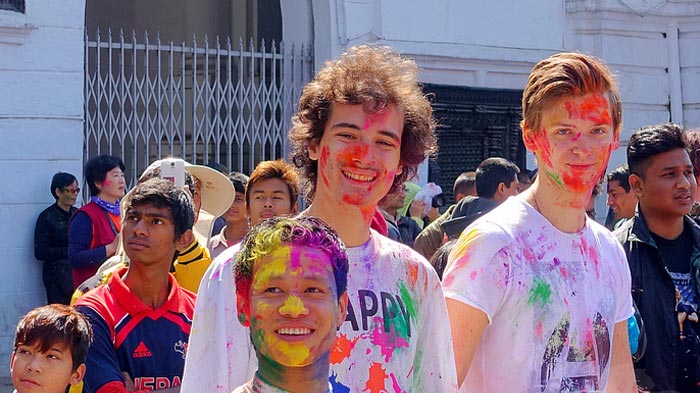
You're highly recommended to participate in this lively water fight. That kind of laughter and relax will definitely bring you back to your childhood. No need to worry about appearance and cleanness, and you can be as naughty as you want. Meanwhile, you'd better put on a white T-shirt for it looks particularly beautiful after being dyed. And you can even leave colorful fingerprints on it as memorial. This must be the best gift for your Nepal trip .
Tips for Nepal Holi Festival
1. White T-shirts, cheap pants and slippers are highly recommended. After the carnival, you can either throw them away or keep them as Holi souvenirs. 2. It's suggested to prepare a raincoat for the camera. And the easiest way is to cover it tightly with plastic wraps. 3. Facial cleanser and shampoo are the essentials to clean off the paints. 4. If you just want to observe this colorful festival, the steps of the temples around Durbar Square are the best spots for photography.
It's predicted that Holi Festival this year will fall on Mar.13, 2017. Why not set aside some time to experience the most colorful festival with local Nepalese? Please feel free to contact us for more about Nepal festival tours.

About the Author - Master Catherine Jigme
With exceptional passion and outstanding leadership, Mrs. Catherine has dedicated herself to Tibet inbound tourism and China tour for 15 years. As one of the handful females who see great potential of Chinese inbound tourism, Catherine has made great contribution to promoting Tibet tourism and enhancing the employment of Tibetans and prosperity of local Tibetan community.
Over the years, she travelled overseas with Tibet Tourism Bureau many times to promote Tibet tourism. Currently, Catherine works as the marketing director of Tibet Vista, an opinion leader behind the whole team of Tibet Vista.
Email me about your travel idea
https://plus.google.com/+TibetVista
Read all my articles about Tibet travel
Related Articles & Posts
- Teej Festival
Teej Festival is particularly held at Pashupatinath to commemorate the reunion of Goddess Parvati and Lord Shiva. Nepale ...
- Indra Jatra
Indra Jatra, also known as Yenya, is the largest street festival in Nepal. Following Gai Jatra, Indra Jatra festival is ...
Gai Jatra, also known as festival of cows, is mainly celebrated by the Newar community in Kathmandu to commemorate the d ...
- Tihar Festival
Tihar is the second biggest festival in Nepal. It falls in September to Octorber and lasts for 5 days. Neplais will hono ...
- Dashain Festival
Dashain is the grandest, longest and most auspicious festival in Nepal. It falls in September to Octorber and lasts for ...
Most Popular Tibet Tour Packages

8 Days Lhasa to Everest Base Camp Small Group Tour: Marvel at Mt.Everest Real Close from 4 Different Viewing Platforms
Lhasa - Gyantse - Shigatse - Everest Base Camp - Shigatse - Lhasa

15 Days Kailash and Manasarova Small Group Tour: A pilgrim’s final fantasy and the greatest overland trip in Tibet.
Lhasa - Gyantse - Shigatse - E.B.C - Saga - Kailash Trek - Darchen - Lake Manasarovar - Saga - Gyirong - Tingri - Lhasa

10 Days Lhasa to Everest Base Camp and Namtso Lake Small Group Tour
Lhasa - Gyantse - Shigatse - EBC - Shigatse - Lhasa - Namtso Lake - Damxung - Lhasa

8 Days Driving Across Himalaya Overland Adventure from Kathmandu to Lhasa
Kathmandu - Gyirong - Everest Base Camp - Tingri - Shigatse - Gyantse - Lhasa

4 Days Lhasa Impression Small Group Tour: Explore the Heart of Tibet and Mingle with the Locals

7 Days Lhasa to Kathmandu Overland Small Group Tour: Traverse from the North Side to the South Side of Mt.Everest for the Best of the Himalayas
Lhasa - Gyantse - Shigatse - Everest Base Camp - Gyirong - Kathmandu

6 Days Central Tibet Culture Small Group Tour: Explore Tibet's religion, cultural gems, and captivating landscapes.
Lhasa - Gyantse - Shigatse- Lhasa

13 Day Lhasa, Mt. Everest, Mt. Kailash, Lake Manasarovar and Kathmandu Adventure Tour
Lhasa - Gyantse - Shigatse - EBC - Saga - Darchen - Kailash Trek - Darchen - Saga - Gyirong - Kathmandu
Have a Question? Ask below or call +86 28 81754631
Question Summary *
Please fill in your contact information, we will send you the answer by email
Country * : United States India Australia Malaysia United Kingdom Singapore Canada Germany China France Indonesia Hong Kong, China Netherlands Spain Italy New Zealand Brazil Mexico Thailand Switzerland Japan South Africa Nepal Philippines Russia Sweden Belgium Argentina Austria Ireland Israel Chile Vietnam Denmark Bangladesh Poland Portugal Sri Lanka South Korea Oman Romania Pakistan Other Colombia Hungary Taiwan, China Finland Greece Turkey Norway Mongolia Bhutan Bulgaria Costa Rica Myanmar Saudi Arabia Slovenia Ukraine Lithuania Egypt Qatar Mauritius Serbia Ecuador Uruguay Iran Niger Venezuela Cyprus Lebanon Nigeria Honduras Latvia Peru Guatemala Belarus Cambodia Estonia Kenya Macau, China Malta Tunisia Albania Bahrain Jordan Luxembourg Andorra Azerbaijan Georgia Guinea Kuwait Panama El Salvador French Guiana Iceland Kazakhstan Macedonia Micronesia Montenegro Morocco Paraguay Tanzania Uzbekistan Zimbabwe Anguilla Armenia Belize Benin Bolivia Botswana Dominica Eritrea Ethiopia Fiji Laos Liberia Libya Malawi Mali Moldova Monaco Namibia Norfolk Island Reunion Island Somalia Swaziland Tajikistan Turkmenistan Tuvalu Yemen Zambia Afghanistan Algeria Angola Antarctica Aruba Bahamas Barbados Bermuda Burkina Faso Burundi Cameroon Chad Comoros Djibouti East Timor French Polynesia Gabon Gambia Ghana Gibraltar Greenland Grenada Guadeloupe Guam Guernsey Guyana Haiti Iraq Jamaica Jersey Kiribati Kosovo Lesotho Liechtenstein Madagascar Maldives Martinique Mauritania Mayotte Island Montserrat Mozambique Nauru New Caledonia Nicaragua Niue Palau Pitcairn Island Puerto Rico Rwanda Saint Helena Saint Lucia San Marino Senegal Seychelles Sierra Leone Suriname Timor-Leste Togo Tokelau Tonga Islands Uganda Vanuatu Vatican City Western Sahara Western Samoa Costarica Croatia Czech Korea
SUBMIT Cancel
0 Comment ON "Holi Festival"
Check All Tibet Travel FAQs Here
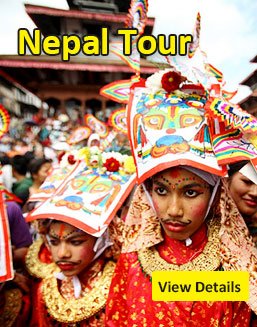
Nepal Festivals
- Tibetan Festivals
Ask a Quick Question
Your Full Name:
Your Email Adress:
More about Your Travel Plan:

- Date Converter
- Nepali Unicode
- Preeti to Unicode
- Unicode to Preeti
- Digital Marketing
- Entertainment
Holi Festival – Essay | 200, 300, 400, 500 Words

What is Holi?
Share this:, read also related posts, privacy overview.
| Cookie | Duration | Description |
|---|---|---|
| cookielawinfo-checkbox-analytics | 11 months | This cookie is set by GDPR Cookie Consent plugin. The cookie is used to store the user consent for the cookies in the category "Analytics". |
| cookielawinfo-checkbox-functional | 11 months | The cookie is set by GDPR cookie consent to record the user consent for the cookies in the category "Functional". |
| cookielawinfo-checkbox-necessary | 11 months | This cookie is set by GDPR Cookie Consent plugin. The cookies is used to store the user consent for the cookies in the category "Necessary". |
| cookielawinfo-checkbox-others | 11 months | This cookie is set by GDPR Cookie Consent plugin. The cookie is used to store the user consent for the cookies in the category "Other. |
| cookielawinfo-checkbox-performance | 11 months | This cookie is set by GDPR Cookie Consent plugin. The cookie is used to store the user consent for the cookies in the category "Performance". |
| viewed_cookie_policy | 11 months | The cookie is set by the GDPR Cookie Consent plugin and is used to store whether or not user has consented to the use of cookies. It does not store any personal data. |
Holi Festival 2022: Significance and Importance In Nepal
New spotlight online.
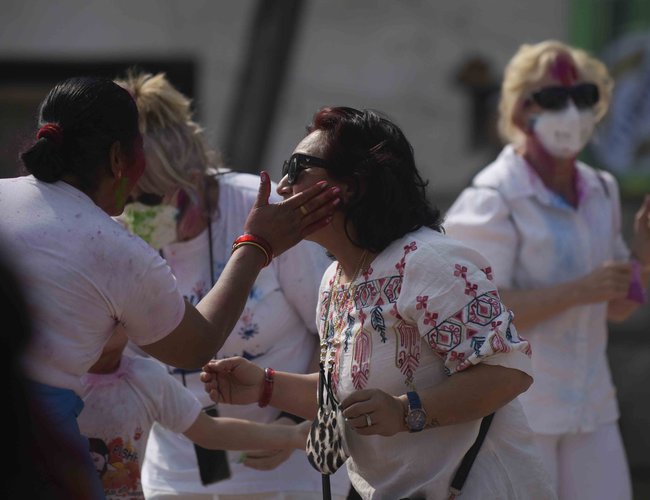
From smearing each other with colours to enjoying a plate of delicious gujiyas together, the festival of Holi ushers in a carnivalesque mood among people of all age groups, every year.
Kathmandu valley and rest of hilly region of Nepal celebrates the Holi festival today. However, the Holi will be celebrated tomorrow in plain areas of Nepal .
The customs and rituals may be different across regions but what unites them is the spirit of this festival of colours.
Holi, also known to the world as the “Festival of Colors” or “Festival of Love,” is one of Nepal’s most auspicious Hindu festivals. It manifests the victory of good over evil and celebrates the divine love of Radha and Krishna.
The two-day Hindu festival originated and is primarily celebrated in the Indian subcontinent. It is held during the full moon day in the Hindu calendar month of Falgun (March). Hence, the celebration of the Holi Festival in Nepal marks the end of the winter and the arrival of spring.
The auspicious occasion of colors is widely celebrated by the majority of all ethnicities in the nation. During this festival, the locals express their blessings and good wishes by throwing dry powder and colored water at each other. Holi has spread to different parts of North America and Europe in the last few years to celebrate love, colors, and recreation.
History and Rituals of the Holi Festival
Holi, also known as “Phagu Purnima,” has become one of the most loved festivals in the Nepalese community. Like many Hindu festivals, Holi has more than one cultural significance.
In India, the tradition centers around the demonic siblings Holika and Hiranyakashipu. It came into practice as a festivity when a devil king Hiranyakashipu plotted to kill his own son Prahlad with the help of his sister Holika. Holika was a recipient of a holy boon, which enabled her to resist the fire. She entered the burning fire with Prahlad in her lap. Prahlad, a true devotee of Lord Vishnu was saved from the accident while Holika was burnt to ashes.
Hence, many people believe the festival was named after Holika. In short, it is the celebration of the triumph of good over evil.
In India’s Braj region, this festival is celebrated to commemorate the divine love of Radha and Krishna. According to the symbolic legend, Krishna had a dark blue skin color as a demon had poisoned him when he was a child. So in his youth, Krishna always worried whether the fair-skinned Radha wouldn’t like him due to his appearance.
Tired of his desperation, Krishna’s mother, Yashoda, asked him to approach Radha and tell her to color his face with some brightly-colored powder. After this, Radha and Krishna became a symbol of divine love. Hence, in this part of India, Holi is celebrated in commemoration of the coloring of Radha and Krishna’s faces.
Whereas in the Nepali context, the colorful festival is a way of expressing gratitude to the Hindu legends and welcoming spring.
How Do You Celebrate Holi in Nepal?
Holi in Nepal is basically a celebration of colors. Hindus around the country mark the festivity by playing with bright-colored powders and lighting bonfires.
Holi is usually celebrated with loved ones, family members, friends, and community members. People wish each other the greetings of Holi by splashing colorful water balloons and colored powders on and over each other.
Basantapur Durbar Square has been the hub for the celebration of Holi in Kathmandu. If you are here around the time, you can choose to participate in the festival.
The celebrations usually start a week before the main day. Holi celebrations in Nepal can be colorful and loud. The crowd is energetic, and the entire scene looks nothing short of a paintball game. One can witness the crowd running around with colorful faces and water balloons.
On this day, people usually dress in plain white clothes to let the vibrant colors sit perfectly on the clothes. As the festival also stands for accepting differences and friendship, many individuals see this as an opportunity to resolve the old arguments, cold relations, and any kind of barriers.
Concerns Regarding the Holi Festival
The Holi festival generally ensures a great time for the people celebrating it. However, it has its shortcomings. The festival is not new to unwanted and sometimes unpleasant incidents. Since the streets are usually crowded during the festival, there are high chances of losing your valuable possessions amongst pickpockets. You should always stay with your loved ones and trusted people at an event like this.
While some individuals will greet you in advance and ask for your consent to participate, there will also be people who will not bother asking. Most people will directly put/throw colors on you, which can be a bothersome experience for some travelers. If you do not favor such incidents, please let the locals know that you are not okay with that kind of treatment.
As much as this is a festival of friendship, love, family, and celebrations, this is not free of other safety concerns. A lot of synthetic colors in the market today are not chemical-free. Besides causing damage to the skin, it can cause various health complications. This is also why many millennials chose not to be a part of the festivals.
Additionally, many young individuals are also looking at the festival through an eco-friendly approach. A lot of people today do not actually want to impose more threats on the environment with the ever-growing climate change issues. The bonfires have also contributed to deforestation issues. Likewise, the extensive use of colors also stagnates the water bodies and ecosystem.
However, if you are willing to see what Holi is all about, be prepared to be soaked in colorful water as you immerse yourself fully in this festival.
Holi Festival 2022 Dates
In 2022, the auspicious Holi festival will fall on the 17th and 18th of March. If you are eager to be a part of the color euphoria, do match your travel dates, and kindly keep in touch with Nepal Hiking Team. Holi is not only a one-of-a-kind experience but truly a celebration of love and selflessness. It takes you a step closer to building memories lasting an entire lifetime.
While the main festival of colours is officially due in a couple of days, a lot of people in the country have already started indulging in merrymaking.
An ancient Hindu festival, which later became popular among non-Hindu communities as well, Holi heralds the arrival of spring after winter. It signifies the victory of good over evil and is celebrated as a day of spreading happiness and love. The festival is also celebrated as thanksgiving for good harvest.
According to Bhagvata Purana, King Hiranyakashipu--the king of demonic Asuras, who could neither be killed by a man or an animal--grew arrogant and demanded that everybody should worship him as god.
The king's son, Prahlada, disagreed and chose to remain devoted to Vishnu. Hiranyakashipu was infuriated and subjected his son to cruel punishments. Finally, Holika, the king's sister, tricked him into sitting on a pyre with her. While Holika protected herself with a cloak, Prahlada remained exposed. As the fire blazed, the cloak flew from Holika's body and encased Prahlada, thus saving his life.
Later, Vishnu appeared in the avatar of Narsimha, half man and half lion, and killed the king. This is why Holi begins with the Holika bonfire, which marks the end of evil.
According to another legend, Lord Krishna had developed a characteristic blue skin colour after Putana, a demon, poisoned him with her breast milk. Krishna worried if the fair-skinned Radha and her companions would ever like him because of his skin colour. Krishna's mother then asked him to approach Radha and smear her face with any colour he wanted. The playful colouring gradually evolved as a tradition and later, as a festival observed as Holi, in the Braj region of India.
The celebration
Holi celebrations start on the night before Holi with Holika Dahan, where people perform rituals in front of a bonfire, praying for their inner evil to be destroyed, just as Holika was killed in fire.
The carnival of colours begins the next morning, where people come out on the streets to play with colours, and drench each other in coloured water through water guns or balloons.
Interestingly, different regions in India observe varied customs on this day. In West Bengal and Assam, for instance, Holi is known as Basanta Utsav or spring festival.
A popular form of Holi, called Lathmar Holi is celebrated in Barsana, a town near Mathura, in Uttar Pradesh, where women beat up men with sticks, as those on the sidelines chant ''Sri Radhey'' or ''Sri Krishna.''
Again, in Maharashtra, it is the time of Matki Phod (breaking the pot). Men climb on top of each other to form a human pyramid up to the height from which a pot buttermilk is hung. The one who breaks the pot is named the Holi King of the year.
In Vrindavan, widows and estranged women immerse themselves in colours on Holi. Again, in Punjab, Sikhs revel in colours on Hola Mohalla, which is celebrated a day after Holi.

More on Festivals and Culture
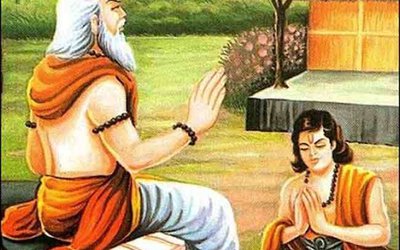
Latest Magazine

VOL. 18, No. 01, July.19,2024 (Sharwan-04. 2081) Publisher and Editor: Keshab Prasad Poudel Online Register Number: DOI 584/074-75

VOL. 17, No. 22, June.28,2024 (Ashar-14. 2081) Publisher and Editor: Keshab Prasad Poudel Online Register Number: DOI 584/074-75

VOL. 17, No. 21, June.14,2024 (Jestha-32. 2081) Publisher and Editor: Keshab Prasad Poudel Online Register Number: DOI 584/074-75

VOL. 17, No. 20, May.24,2024 (Jestha-11. 2081) Publisher and Editor: Keshab Prasad Poudel Online Register Number: DOI 584/074-75
- Tours for Seniors
- Nepal Cultural Tour
- Everest Flight Tour
- Nepal Heli Tour
- Nepal Biking Tour
- Nepal River Rafting
- Spa Package in Kathmandu
- Everest Region
- Annapurna Region
- Manaslu Region
- Langtang Region
- Kanchenjunga Region
- Makalu Region
- Dolpo Region
- Nepal Yoga Retreat
- Nepal Climbing
- Nepal Jungle Safari
- Kathmandu Accommodation
- The Life and Legacy
- About Nepal Hiking
- Official Documents
- Vision Statement
- Responsible Travel
- Testimonials
- Tailor Made Holidays
- Become a Partner
- Terms & Conditions
- Privacy Policy
The Holi Festival of Colours: Vibrant Celebrations
Estimated reading time: 4 minutes
Introduction to the Holi Festival of Colours
The Holi Festival of Colours, stands as one of Nepal’s liveliest and most vibrant celebrations. This joyous occasion unites individuals from diverse backgrounds, inviting them to partake in its colourful traditions and customs. It’s a time for forgiveness and new beginnings, where people set aside grudges to embrace the joys of life and forge new friendships. Moreover, the Holi Festival allows Nepalese locals to express gratitude to various deities, offering thanks for a prosperous harvest season. It’s a festive period filled with joy, laughter, and vibrant hues, where communities celebrate unity amidst diversity.
In this guide, we’ll examine the history and traditions of this beloved festival in Nepal.

The historical significance of the festival
The Holi Festival of Colours, deeply rooted in Hindu mythology, traces its origins back to the legendary tale of Prahlad, the son of King Hiranyakashyap. Despite his father’s opposition to Prahlad’s devotion to Lord Vishnu, the young prince remained steadfast in his faith. Time and again, Prahlad escaped harm miraculously, protected by Lord Vishnu’s blessings. The pivotal moment came when the king’s sister, Holika, attempted to burn Prahlad alive, but divine intervention turned the tables, and Holika perished in the flames instead. Thus, Holi embodies the triumph of good over evil and righteousness over wickedness. Moreover, the festival heralds the onset of spring and new beginnings, prompting emotional celebrations across Nepal and India. It’s a time of joyous reunions, vibrant colours, and renewed hopes for the future as communities come together to embrace the spirit of positivity and renewal.

Traditional preparations leading up to Holi
In the weeks preceding Holi, individuals begin their preparations for the festival by procuring vibrant powders and dyes commonly referred to as ‘gulal’ and ‘abir’. They also stock up on water-filled balloons and pichkaris (water sprayers), which are used to fill them. It’s a time of excitement and anticipation as people start planning get-togethers with family and friends. Many observe fasting in the week leading up to Holi, making it a spiritual experience. The day before Holi, people light bonfires called ‘Holika Dahan’ to honour the conquest of good over evil. Afterwards, traditional prayers and offerings occur, and then everyone joins around the fire to sing and dance in celebration.

Celebration of the festival with colours and music
Holi Festival is renowned for its lively and colourful festivities. During this joyful occasion, people splash each other with vibrant gulal and abir powders while moving to the rhythm of traditional music. It’s a time to unwind, cherish the presence of family and friends, and set aside any disagreements or disputes. Everyone joins in this lively celebration of life and unity regardless of age. Additionally, the festival offers a chance to enjoy traditional cuisine and beverages like bhang thandai, crafted from milk, almonds, spices, and cannabis leaves.
When is the Holi festival of colours in Nepal in 2024?
In Nepal, the Holi festival of colours spans two days in 2024 due to the country’s diverse geography. With regions divided into Hills and Tarai (Plains), this vibrant celebration embraces different communities nationwide. On March 24th, 2024, Holi will paint the Hilly region, including bustling cities like Kathmandu and Pokhara, in a riot of colours. People gather joyously, splashing each other with vibrant powders and water, filling the air with laughter and cheer. The following day, March 25th, 2024, Holi continues its colourful journey into the Terai region. Here, individuals from diverse backgrounds come together to partake in the tradition of smearing coloured powders and water, dancing to lively music, and savouring delicious treats. It’s a time of unity amidst diversity, where grudges are set aside and bonds are strengthened. So, mark your calendars and join in the fun-filled celebration of Holi!
Conclusion
People eagerly anticipate the Holi Festival of Colours in Nepal year-round. It’s a time of happiness and togetherness, where individuals come together to enjoy bright colours, lively music, and tasty meals. The festival serves as a reminder of our interconnectedness and the importance of unity over discord. The atmosphere during Holi is lively, with individuals of all ages participating in the festivities. If you can experience it firsthand, don’t hesitate – it’s an experience you’ll cherish.
Related Links
- Festivals of Nepal
- Unravelling the Mystique of the Flag of Nepal: A Traveller’s Perspective
- Teej Festival in Nepal: A Tapestry of Tradition and Tourism
- Saga Dawa Festival Tour in Kailash
- Must-Celebrate Festivals During Your Bhutan Tour
Pay Safely With Us
The payment is encrypted and transmitted securely with an SSL protocol.
Get a Question?
Do not hesitate to give us a call. We are an expert team and we are happy to talk to you. +977 9851068290
Stay Updated with the Latest News and Exclusive Offers!
Proceed booking, already a member, don't have an account create one., or continue as guest.
For quick Inquiry: +977 98510 42334
- Everest Base Camp Trek
- Annapurna Base Camp Trek
- Upper Dolpo Trek
- Manaslu Circuit Trek
- Kanchenjunga Circuit Trek
- Langtang Valley Trek
- Ruby Valley Trek
- Makalu Sherpani Col Pass trek
- Everest Khumbu Treks
- Annapurna Treks
- Ganesh Himal & Manaslu Treks
- Dolpo Treks
- Dhaulagiri Treks
- Humla Simikot Treks
- Kanchenjunga Treks
- Langtang & Helambu Treks
- Rara Mugu & Jumla Treks
- Less Touristic Trekking Destination
- Nepal Package Tours
- Day Hike Around In Kathmandu
- Nepal Bhutan Tours
- Nepal Tibet Tours
- Nepal India Tours
- Nepal Bhutan India Tours
- Nepal Bhutan Tibet Tours
- Adventure Sports
- Trekking and Walking
- Peak Climbing in Nepal
- Homestay Trips
- Rafting & Kayaking
- Cultural & Religious Tours
- Mountain Expedition
- Online Payment
Holi Festival in Nepal

Holi is a national festival in Nepal and India. While Nepal and India are full of cultures and festivals, Holi – the festival of happiness is one that both the Nepalese and Indians look forward to the most. It is a vivid and joyous ancient Hindu celebration that has now gained popularity among non-Hindu cultures.
Though originated in India, the ‘festival of colors’ is spread to almost every corner of Asia and western parts of the world via the Indian diaspora. After all, the festival is all about getting together to eat, dance, throw colors at each other, and have fun.
The main matter of one of the most awaited and joyful celebrations, Holi is to commemorate the end of winter, the beginning of spring, and thanksgiving for a successful harvest. Also known as ‘the festival of love, Holi also signifies the triumph of good over evil.
When is Holi Festival Celebrated?
Holi is a Hindu festival that takes place on the last full moon day of the Hindu lunar month, Phalguna/Falgun, which usually falls in March. Holi's exact date varies from year to year. For this year, 2022, Holi will begin on Friday 18 March.
The mythology behind Holi Festival
Holi is related to a number of Hindu stories and legends. One of them is related to Hiranyakashyap, a demon king who desired immortality and the Lord Vishnu. Hiranyakashyap had a desire to be worshiped by everyone, but his own son, Prahlad, preferred to worship Lord Vishnu. It enraged him, so the demon king summoned his sister Holika, who was impervious to fire, to join Prahlad on the flames.
When Holika sat in the fire with Prahlad, the flames were unable to reach him. Holika was slain as a result of it. The demon king was then killed by Lord Vishnu. So, Holi is celebrated as a symbol of good triumphing over evil.
Another Hindu Mythology says Holi is to honor the pure love of Radha and Krishna. The story begins when Krishna was concerned as a child that the fair-skinned Radha would reject him because of his appearance.
According to the legends, Krishna had a dark blue complexion because a demon poisoned him as an infant but didn’t die. Instead, the demon turned into ashes. Krishna's mother, Yashoda, was fed up with his desperation and told him to approach Radha and smear some vividly colored powder on her face. When he did that, Radha completely fell in love with him. Radha and Krishna became a symbol of divine love after that. So, to recall the legendary moment of Krishna and Radha, that shared love and happiness, Holi is celebrated each year very joyously.
How is Holi Festival Celebrated?
The celebration of the Holi festival starts on the evening of the Phalgun Purnima (full moon) on the Hindu Lunar Solar calendar. People light bonfires, perform religious rituals in front of a bonfire, and pray for the destruction of their internal evil on this day which is also known as Chhoti Holi or Holika Dahan.
The next morning after the Holika bonfire is known as Rangwali Holi (colorful Holi), in which everyone gathers to play with colors. People of all ages gather to the streets for a day of fun, dry color (abir in Hindi/Nepali) smearing on one other's faces, and colored water splashing. Anyone and everyone is fair game on Holi, whether a friend or a stranger, rich or poor, man or woman, youngsters or elderly, they all participate in the smearing of colors, dancing, singing, and feasting. People would pay visits to friends and family to offer Holi treats, food, and drinks. On this day, traditional cocktails and sweets mixed with bhang (a cannabis-based intoxicant) are very popular.
In a religious context, the colors are rich in symbolism and have a variety of meanings: they might represent a vivid new life or even sin in some ways. Washing off the dye at the end of the day can represent a renewed dedication to living wisely, as well as a cleansing of evils and demons for some.
Holi Celebration in Nepal
Holi is also called Fagu Purnima which literally translates to the full moon of Fagu/Falgun. The main theme of the joyous Holi festival is to welcome spring, thank the good harvest, and share the love. But, the ritual may vary from place to place. India might celebrate Holi according to their customs or legends or locations. Nepal also follows a similar yet slightly different ritual as India.
A day before Holi or at the full moon night, a lingo or a chir (a long bamboo stick) is erected and covered in various colors, then is taken down and burned to announce the commencement of Holi in Kathmandu Durbar Square. This custom is called Chir Dahan or Holika Dahan, and it commemorates Holika's end, related to demon Holika legend.
The following day as like any other place, Nepal and its places, mainly capital Kathmandu and streets are fully covered with different bright colors. And inside Kathmandu, the Basantapur Durbar Square has been the focal point for Holi celebrations.
The Holi celebrations here are vibrant and boisterous. The crowd is pumped up, and the entire atmosphere resembles a paintball match. The mob can be seen running around with brightly colored faces and water balloons. The popular celebrities can be seen singing and singing in the Holi concert. The tank full of water is splashed all over the crowd. People are seen in white clothes to allow the colors to sit properly on the outfits. Listening to or reading these things is already fun. Experiencing and celebrating could bring much more.
After all, the Holi Festival is full of fun and love, which is why many regard the event as an opportunity to resolve past conflicts, sour relationships, and other hurdles because it stands for accepting differences and friendship.
A note that the Holi celebration takes place in the Hilly region a day before in the Terai region in Nepal.
Concerns during Holi Festival
While Holi is a celebration with the main theme to share love and happiness and be selfless, things may not go as planned. Given that the celebration is carefree and done in a huge mass and among strangers, there could be some thoughtless actions and incidents. For example, in the name of celebration, the pickpockets have the greatest chance in the mass. The over-limit intoxication could lead to disputes and fights. The stubbornness of some people might disturb one’s pressure.
Like the proverb, “there are two sides to every story”, Holi also has its positive sides as well as negative sides. It already is a chaotic and crazy event. It could be challenging if you do not have proper guidance and information about this festival as you will have to encounter many sudden things. So, if you're heading out on the streets on this day, here are some of the most important tips for having a safe and enjoyable celebration.
Tips for enjoying Holi 2022 in Nepal
- We recommend you to celebrate with your friends or find people to celebrate with. As the saying goes, safety in numbers, and having someone watching out for you helps you feel more secure.
- Avoiding the wild crowds would be the best option to have fun without much disturbance.
- Old clothes or wanting to get rid of clothes could come in handy today. Or you can purchase the cheap clothes sold for Holi because once your clothes are soaked in colors, there is no chance of reusing them.
- Safety comes first. Our eyes are gentle and any unwanted thing could disturb our delicate organ. So, we recommend wearing your glasses or shades for eye safety before you set out for the celebration.
- Likely, cover your skin with your moisturizer and SPF before coming out of your room on this day.
- Putting some hair oil into your hair and skin before applying the color could prevent it from absorbing.
- Water is crucial. The day is already busy. So, you could get busy and exhausted. So, keep yourself enough hydrated.
- Don’t be afraid to say ‘NO’. If you do not want to be smeared in colors, or dance with the people there, do not hesitate to speak up.
- As the celebration takes in huge mass or a group with colors and water, your valuables could be lost and damaged. So, carry only the important things for the day in the waterproof bag.
Holi is genuinely a celebration of love and selflessness, not just a one-of-a-kind experience. It brings you one step closer to creating memories that will last a lifetime. So gather your pals, get your groove on, be prepared to be drenched in colorful water, and have a blast!
Happy Holi!
Popular tours.
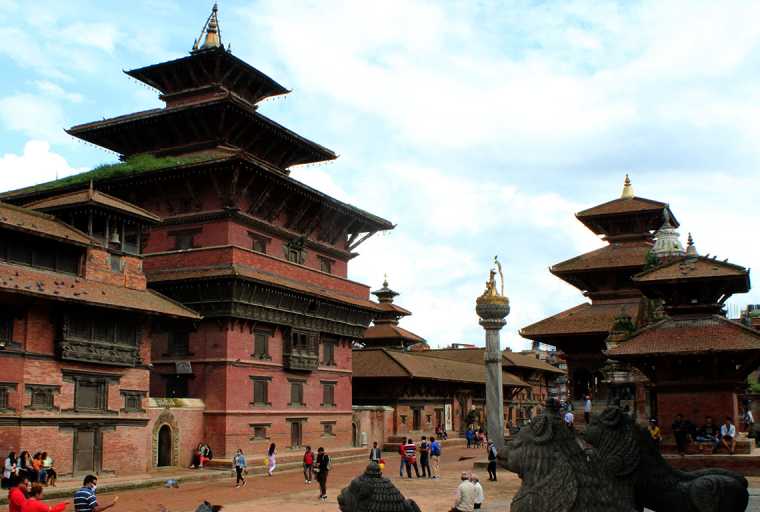
2 Nights 3 Days Nepal Tour Package
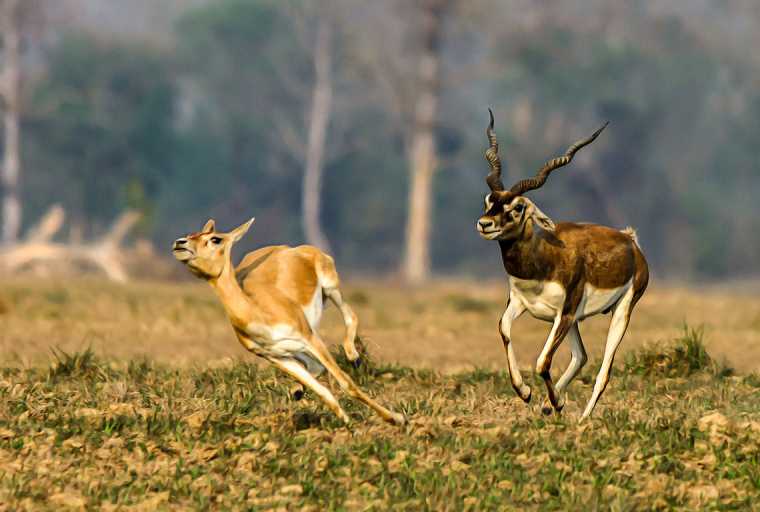
3 Nights 4 Days Jungle Safari Tour
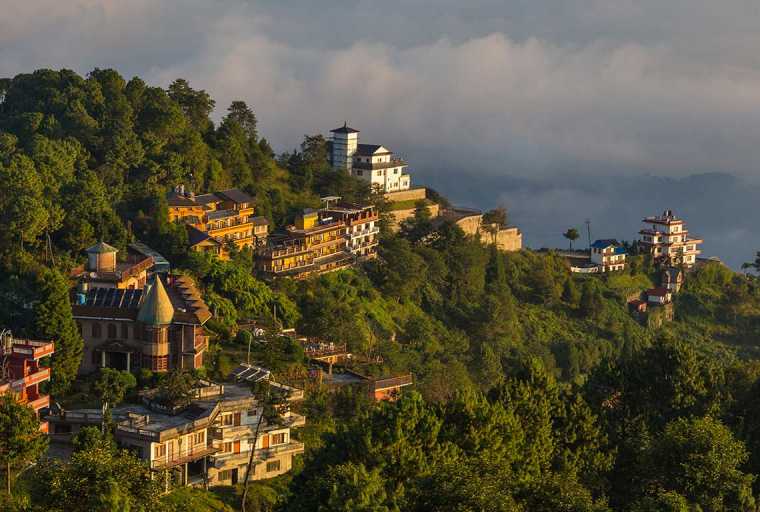
3 Nights 4 Days Kathmandu Nagarkot Tour
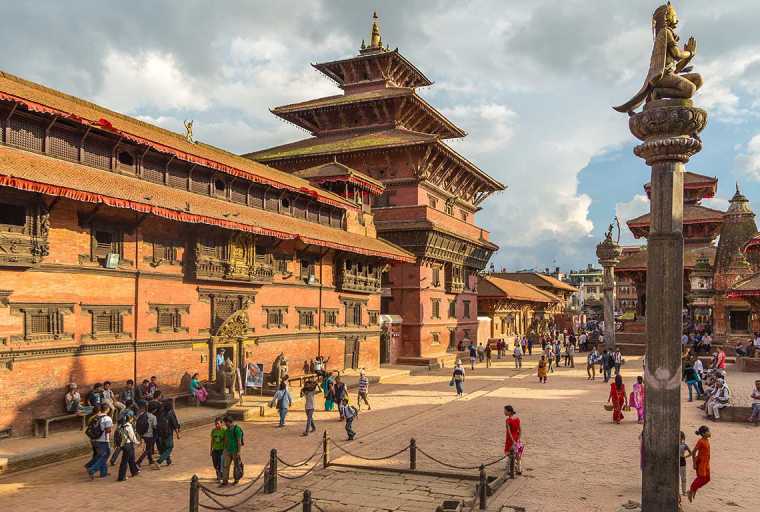
6 Nights 7 Days Glimpse of Nepal Tour
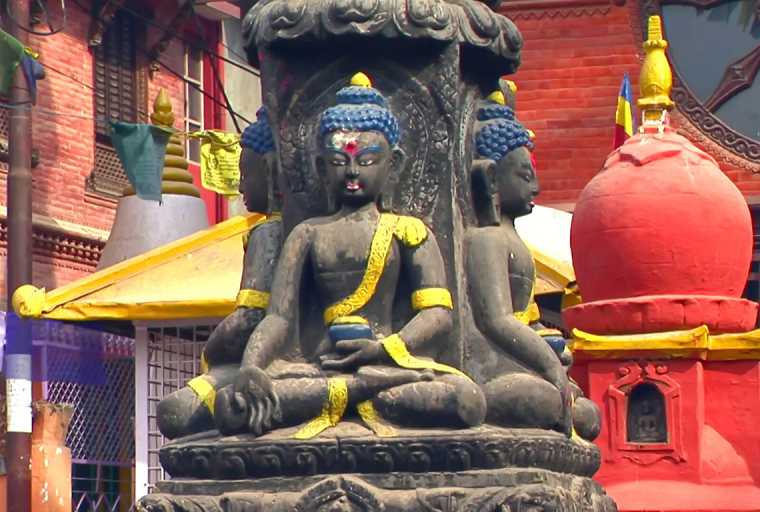
7 Nights 8 Days Cultural Heritages Tour in Nepal
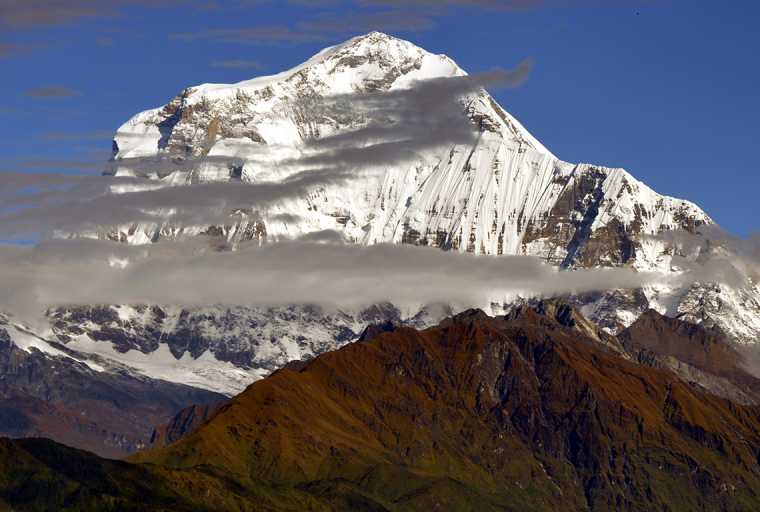
8 Nights 9 Days Scenic Nepal Tour
Popular treks.
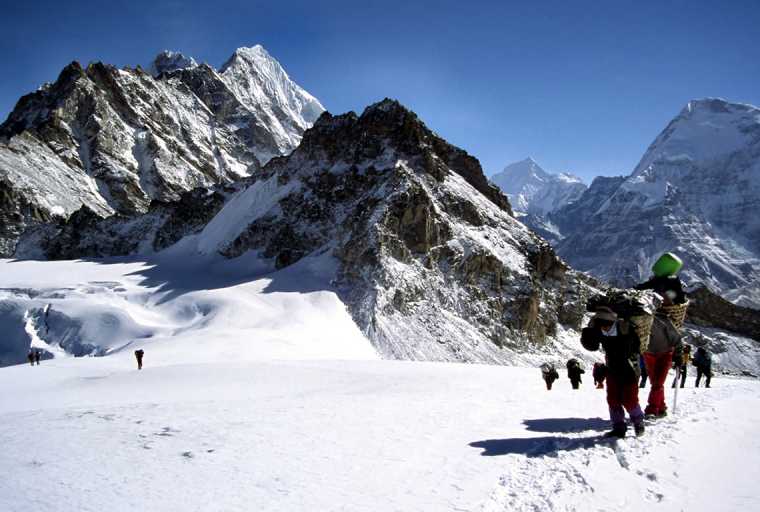
Mera Peak climb with Everest Base Camp Trek
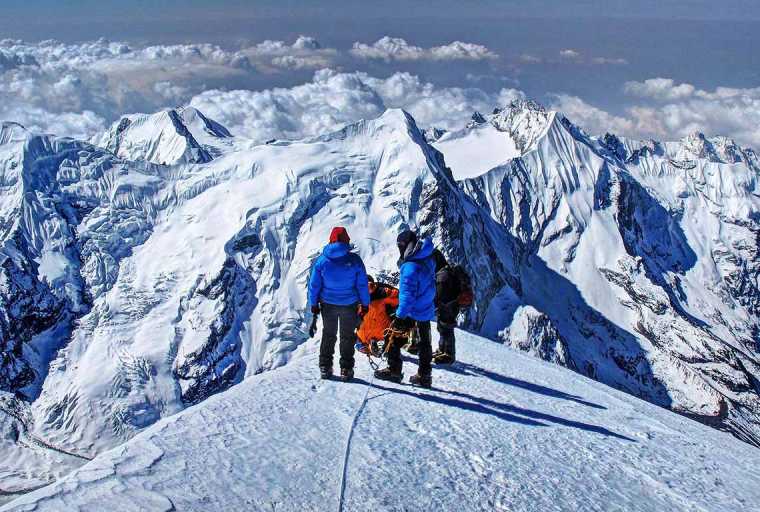
Mera Peak Climbing
Associated with.

Ways You Can Pay
Quick navigation.
- MultiCountry trek and tours
- Nepal Budgets Tours
- Nepal Motorbike Tours
- Adventure Bike Tours
- Day Hikes in Kathmandu
- Cultural and Religious Tours
- Photography Tours
- Legal Documents
- Terms and Condition
- Privacy Policy
- Gear List for Trekking & Climbing
+977 98510 42334
Thamel-26, Kathmandu, Nepal
+614 516 05387
4/8 Florence St
Coburg, 3058, Melbourne, VIC
© 2024 Himalayan Trekkers. All rights reserved.
- Skip to content
- Skip to primary sidebar
Full Time Explorer
Nepal Travel Blog
Holi in Nepal: Why, How & Where to Celebrate
Festivals in Nepal / April 15, 2020 by fulltimeexplorer / Leave a Comment
Holi is a Hindu festival celebrated in India and Nepal which typically takes place in March . Today, it has become a popular festival among tourists who enjoy its bright colors and playful atmosphere. Those who want to participate should learn a little about the meaning of Holi. Holi in Nepal celebrates the end of winter and beginning of spring, the triumph of good over evil, and it’s seen as a day of love.
While there are several stories about why Hindu people celebrate holi, these are a few of my favorites. Krishna (a Hindu god) played a prank on Radha (the goddess of love and compassion) by applying color to her face. Now, applying color to each other is part of the festival. Another story says that Holi is the day children chased Ogress Dhundhi (a female monster who troubled children) away by playing pranks on her, which is why children play pranks and throw water at those passing by on this day. This article is great at explaining the significance of Holi.
Holi is a special day in my heart because it’s when my husband proposed to me. So, I’m particularly fond of celebrating the day. Here are my tips for staying safe and celebrating Holi in Nepal.
Preparing for Holi in Nepal…
Where to celebrate.
It’s best to check local parks and outdoor restaurants for events. These events are typically small and controlled and make it easier to have fun without having to worry about your safety. If you are in Kathmandu, I recommend Le Sherpa or Electric Pagoda. Thamel and Kathmandu Durbar Square are popular spots to celebrate but they tend to be more on the wild side. We celebrated on the side streets between Thamel and Durbar Square and had a lot of fun. If you are in Pokhara, I recommend Lakeside.
Vaseline Your Skin
The number one tip for Holi is to cover your skin in a thin coat of Vaseline prior to going out. Holi fell two days before my wedding this year and it hadn’t even occurred to me that the color powder might dye my skin. If you put Vaseline on first, the color wipes off easily without staining you at all!
Oil Your Hair
Vaseline protects your skin, but oil is what will protect your hair. If you have dark hair, you don’t have to worry. Blondes should take precautions. My mom ended up with a turquoise streak which honestly looked cool and matched her saree for my wedding and my friend Monet ended up with some purple/pink in her hair that also looked cool. Both washed out after a few showers, but if you want to avoid colors, you can oil your hair with almond oil before going out to celebrate.
Wearing White
Wearing white means you are playing Holi. If you’re not wearing white, it’s likely no one will play with you. Likewise, you shouldn’t try to put Holi powder or throw water at people who aren’t wearing white.
Buying Holi Powder
I recommend buying colors from a local shop prior to Holi. We spent about 20 rupees (less than 20 cents USD) per small pack before the big day. On Holi, the same size was around 100 rupees.
While most of the colors washed off easily and quickly, we found that dark green and dark purple were the hardest to get off. These were also the colors that stained hair the most. In addition, they tended to be too dark and made us look dirty rather than colorful. You can’t control what colors other people use, but I wouldn’t buy these colors in the future.
Go Out Before 1:00 pm
Holi is an interesting day because both kids and adults play. Kids play in the morning starting around 10am. They fill water balloons and water guns and try to soak people passing by. It’s a ton of fun to play with the kids. There were a lot of sneak attacks that had us bursting out in laughter.
In the afternoon, more adults come out. Generally, this is 20-25 year old men who are doing drugs or drinking. Around 1pm the tone of the day switched from fun and playful to somewhat dangerous and a lot less enjoyable. We even saw people passed out on the street in their own vomit and men were running up to us and aggressively putting color on us. We ended up leaving when the mood changed. I wouldn’t go out in the afternoon again.
Have a Squad
For safety, I highly recommend traveling in a group. We never had less than 4 people and I felt safe. I don’t think I would want to be alone. On our way back when guys were getting a little rowdy, I felt much safer in a group. It’s also a lot easier to walk up to strangers when you have a crew by your side.
While Celebrating Holi in Nepal…
Don’t drink or eat unknown items.
I feel like this is probably just common sense, but people in Nepal often like to feed you. I’ve accepted tea from tons of strangers, but on Holi you really need to be careful. There is a special green juice and some edibles that I was told are laced with drugs. At first, I thought this meant weed. Later, I was told it has heroine in it. So please don’t accept anything from strangers on this day.
Take the Side Streets
You’ll see a lot of people walking on the main streets which is fun because you can put a lot of color on each other, but the side streets were so much more fun in my opinion. Little kids were hiding on roofs or in doorways and would jump out with water balloons and water guns laughing and throwing water at us. We wouldn’t see them and would scream and laugh as they caught us. It felt a bit like being in a real life video game where you have to dodge and run through a warzone.
If the Road is Wet…
If the road is wet, it means you’re about to be wet too. We could typically tell where kids were hiding based on whether or not the street was wet. If it was, it meant there’d been a water fight there recently.
Watch for Traffic
Again, this should go without saying, but there are no sidewalks on most streets in Nepal. Therefore, you are playing in the road. Please be careful when dodging water balloons. A lot of bikes will likely be driving by and you don’t want to run in front of any. We saw a few people who weren’t paying attention to traffic while playing.
Don’t Play with Dogs
Please don’t put Holi powder on dogs. A lot of stray dogs don’t have a way to wash the powder off and it begins to irritate their skin. If they manage to lick it off, then they are ingesting the powder. Either way, it’s not good for the dog.
Beware of A**holes
Unfortunately, there is always that one person who ruins it for everyone. By going out in the morning, you should be able to avoid this. One guy threw a handful of powder in my mouth as I was saying “Happy Holi.” I began to choke and couldn’t breathe. I had to rinse my mouth with water and even then it sucked. I’ve also been told to watch out for people who use dirty water in the water guns and people who put rocks in the water balloons. Why anyone would do this is beyond me, but some people just suck. So, be careful.
Don’t be an A**hole
Be respectful while playing Holi. Don’t try to put giant amounts of powder on people. Be gentle. Ask permission before putting color on people. Don’t run at people screaming “HAPPY HOLI” while shoving your hands in their face. Don’t touch people inappropriately.
Most importantly, please be gentle with kids. There were a few kids and babies playing. We walked up to them slowly, crouched down next to them and showed them our hands and pointed to their faces. They smiled, and we gently put the powder on their cheeks. They giggled and did the same to us. It was super cute. This is a day for everyone to celebrate so please respect each other.
When You’re Done Playing Holi in Nepal…
Don’t leave a mess.
Holi powder is sold in small plastic bags. Don’t just throw the bags on the floor when you’re done. Keep a plastic bag with you and take your garbage with you when you’re done. Dispose of it in a garbage pail. There is no one to clean up your mess once you’re gone.
How to Get Clean
When you’re done playing, it’s best to take your dirty t-shirt and wipe yourself off with it while DRY. I repeat, do this when you are dry. As soon as the powder gets wet, it’s twice as hard to get off. If you dust most of it off you when you’re dry, it will come off pretty easily. Then you can scrub off whatever is left while you are in the shower.
You might also like…
Michelle della giovanna.
Writer at Full Time Explorer
I’m just your average New Yorker who quit her job in the fashion industry to explore the world. Come find out what it’s like to trade in five-inch heels for squat toilets.
- Visit Twitter account (opens in a new tab)
- Visit Facebook account (opens in a new tab)
- Visit Instagram account (opens in a new tab)
- Visit Pinterest account (opens in a new tab)
This website uses affiliate links. This means that I may receive a small commission (at no extra cost to you ) if you purchase something through these links. I only link to products and companies that I love. Those companies, in return, reward me for connecting them to you .
Full Time Explorer LLC is a participant in the Amazon Services LLC Associates Program, an affiliate advertising program designed to provide a means for sites to earn advertising fees by advertising and linking to Amazon.com.
Reader Interactions
Leave a reply cancel reply.
Your email address will not be published. Required fields are marked *

- Festivals & Events
Holi Festival in Nepal (Terai Holi Festival)
- Modified on Apr 12, 2024
NEPAL is a culturally diverse country where we celebrate enormous festivals, each of them consisting of its distinct cultural importance. Every region has its unique styles and rituals for celebrating these festivals and showcasing its community. In this multilingual and multicultural country, every day is a festival here. Similarly, terai Holi is one of them having its great importance in the plains of Nepal also known as the “Terai Region '' located in southern Nepal lying south of the foothills of the Himalayas.
Holi Festival in Nepal for the year 2025 will be held on the 14th of March ( Hilly Region) and 15th of March (Terai Region), 2025.
Table of Content
What is holi and what are the myths behind its celebration.
Holi is the festival of colors in Nepal celebrated in “Fagu Purnima”- the full moon day with great joy, especially in Terai. During this festival, people exchange different smear color powders with their friends and family members while exchanging greetings, harmony, and happiness, and wishing them “Happy Holi”. This festival is said to celebrate the victory of justice over injustice. The color powders used in the festivals have their meaning as yellow here is believed as Lord Bishnu & Lord Krisna's favorite color, blue is a symbol of war, red is the symbol of power and good fortune whereas Lord Ganesh loved all the colors. Out of many tales of history, Holi is one of them. Even the celebration of Holi has several myths according to the people of Terai. Some of them are mentioned down below:
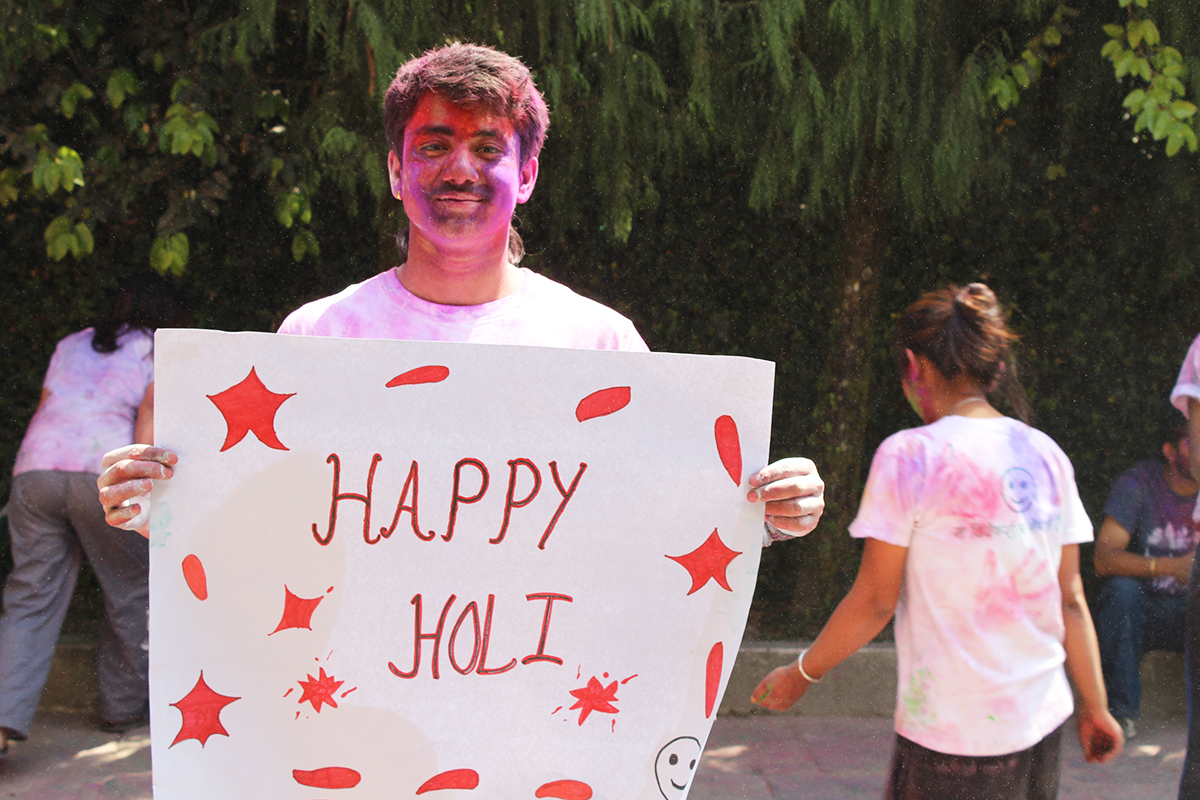
Another myth of Holi is associated with Lord Krishna, another form of Lord Bishnu with his childhood love Radha. In Lord Krishna’s birthplace, the festival used to be celebrated until Rang Panchami in memory of their divine love. As Krishna was born with a dark-skinned complex he wasn't satisfied with his skin color people around him used to tease him. Likewise, when Krishna complained to his mother about his skin complexion compared to Radha who had very fair skin, he asked her what if Radha didn't like him for his dark skin. Then, his mother advised him that Radha would like him in any texture or color of his skin, and he could ask her to color his face so that they would have the same color reflected on each other. Thus, it is believed to be the occasion where Radha Krishna became bound to each other as one “single soul inhabiting two bodies’’. This is why Holi is also regarded as the celebration of love with a variety of colors and joys.
The last but not the least myth behind the celebration of colors in this festival is related to Lord Ram when Lord Rama returned to his city after the Victory with Ramayana he was welcomed home by showering different colors in the air called “Rang” in both Nepali and Indian language.
Why is Terai Holi celebrated the day after the Hilly Region?
The terai Holi is celebrated the day after the hilly region in this celebration of justice, people collect wood and have bonfires, to symbolize the death of Holika which is called “Holika Dahan”. “Holika Dahan” means flaming fire after the sunset on the day of Fagu Purnima- the full moon day reflecting the death of the fire immortal Holika who wasn't aware that she wouldn’t have gotten burnt if she walked through the flame alone.

As in the hilly region of Nepal Holi is celebrated on the exact day of Fagu Purnima. The festival formally begins with the placing of “Chir- a long bamboo stick wrapped with variants of colored cloth” in Kathmandu Durbar Square. Which officially welcomes the ceremony by burning it down into ashes the day before the ceremony. Whereas, this ritual of celebrating Holi seems pretty distinctive and modern to the Terai people. However, only in Terai, we can witness the true depth and essence of the festival with its originality.
How is Holi celebrated in Terai?
As exciting as it sounds, these festivals of colors are celebrated with equal joy and excitement among the Terai people holding their great importance. The native people staying across the country tend to go back home to their loved ones. They begin the celebration by touching the foreheads of their elders’ feet in reverence and reserving different colored water in the clay pots at different corners of the streets. The main activities done at this festival are splashing water on each other, coloring each other faces with different colors, drinking hemp drinks and food made by themselves, singing, and dancing.
On this auspicious day, they also believe in letting go of their regrets and misunderstandings between each other and celebrating the day by mending their broken relationships and starting a new bond. They invite their friends and relatives, cooking delicious food for the feast on the day. The festival indicates the start of spring in Nepal, the Holi festival is celebrated for 2 days. This is the festival where every face is colored holding a glass filled with Ghoota (mixture of hemp and milk drink) and flowing aroma of Tarawa, Varuwa, and Malpuwas (traditional terai delights).
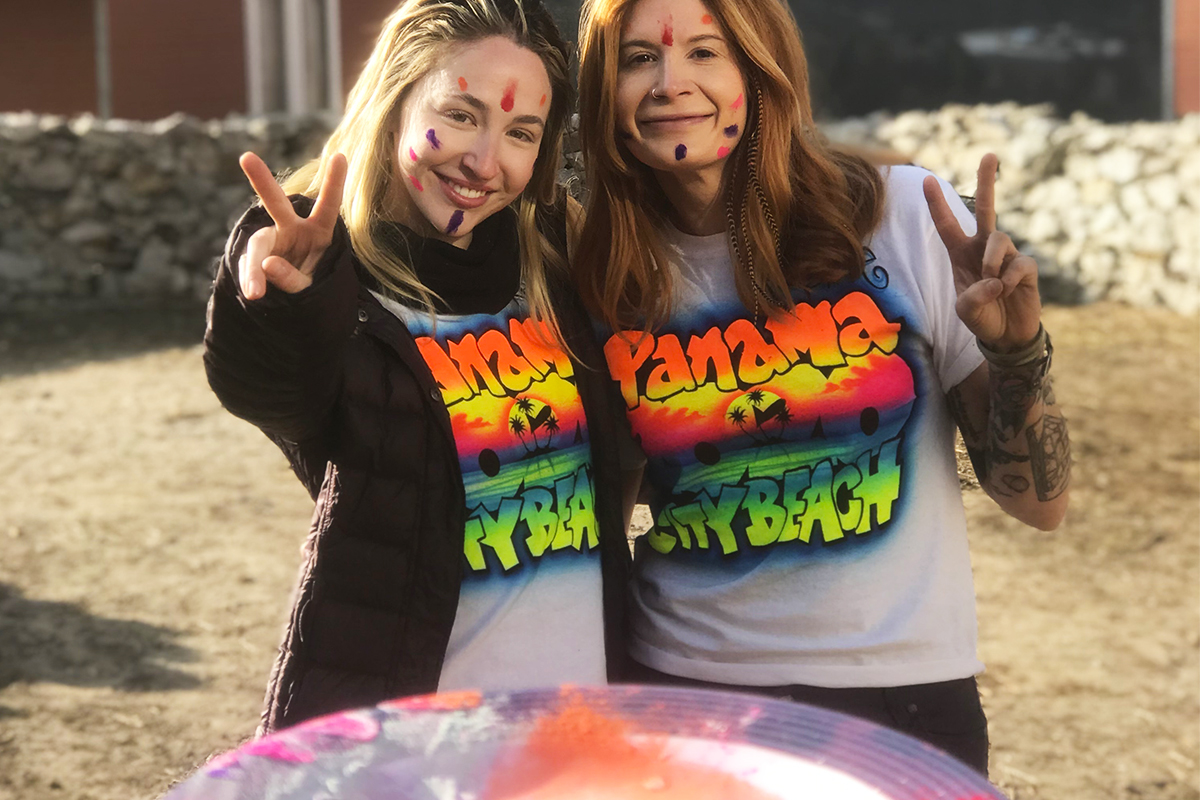
Besides the myths and the colors, the native enjoys spring-blooming everywhere saying goodbye to the chilling winter season. As much as it has cultural significance they also believe that is the blessing from the god for their upcoming harvest and land fertility. On this day the plains of Nepal are filled with the echoes of “HAPPY HOLI".
We organize treks in the mountains during the Holi Festival as well. Please contact us for different trekking and tour packages of Nepal for this on the occasion of the Holi Festival.

Updating...
- Information
Send an Enquiry
Recent posts.
- Sagarmatha National Park: Home of Everest
- Shrawan Sankranti: A Celebration Across the Hindu World
- 10 Places Most of the Travelers Miss In Nepal; But Shouldn't!
- Which is Harder? Kilimanajro V/S Everest Base Camp
- Best Season to Trek in Nepal
- A Complete Guide to Kailash Manasarovar Yatra : Everything You Need To Know
Related Posts
- Traveling Safe and Proud: LGBTQIAP+ Rights and Travel Considerations for Nepal
- Accommodations
- Adventure Sports
- Cultural & Historical
- Food and Taste
- Heritage Sites
- National Parks & Conservation Areas
- News & Events
- Photography
- Places To Visit
- Temples & Monasteries
- Things To Do
- Travel Guide & Tips
- Uncategorized
We use cookies to ensure that we give you the best experience on our website.

COMMENTS
Find here Holi festival essay in Nepali language. We have posted here an essay about Holi in Nepal. Get this essay about Holi in Nepali language. This essay on Holi in Nepal is just for you. Read an online free essay on Holi festival in Nepal. If you want, you can download this holi festival essay in Nepali. Free online essay on Holi in Nepal.
Holi per Nepali nibandh | होली पर नेपाली निबंध | नेपाली निबंध | Essay on Holi Festival in Nepal About our Channel Our channel is about ...
Essay writing on Holi Festival for students. Very easy essay writing. Holi is a Hindu festival which is also known as the festival of colours.https://youtu.b...
Essay on Holi Festival in Nepali । होली पर्व निबन्ध । Easy Essay Writing#Holifestival#Holi#Essay#EssaywritingTo stay updated please CLICK HERE to SUBSCRIBE: ...
The Nepali name of the Holi festival is Fagu Purnima. Nepalese celebrate Holi on the Falgun (February-March) i.e. the 11th month of the Nepali calendar on the day of the full moon. so, Fagu is named after Falgun month and Purnima means a full moon. Fagu Purnima is a festival celebrated by Hindus hailing the arrival of the Spring season.
Nepal's Holi holiday is more than just a chance to play with bright colors. It is also an important part of the country's culture. Holi has its roots in Hindu lore and faith. It is a celebration of Nepal's rich history and community. Holi brings the whole country to life with bright colors and happy parties.
The Holi festival, or springtime celebration, takes place in March. The colors of Holi, red and yellow, represent the victory of good over evil. Holi is the symbol of Joy and happiness that celebrates in Nepal & India. Holi festival has an important place in Hindu mythology, with various legends associated with it.
Holi, one of the most prestigious Hindu festivals celebrated all over the world by Hindus, especially in Nepal and India. Holi also called Faghu Purnima in Nepali and the festival of Colour in English is celebrated on the full moon day that falls on the month of Falgun, in between February and March. It is celebrated as the significance of a ...
252. The Festival of Colours popularly known as Holi is an ancient Hindu Festival, celebrated mostly in Nepal, India, and some parts of Asia and Europe. The festival has its origin in the Indian subcontinent and signifies the entry of spring season after the winters. The article below talks in brief about the origin of Holi, its significance in ...
The region comes alive with vibrant Holi processions and cultural performances. 2. Kathmandu Valley: In the Kathmandu Valley, which includes the capital city of Kathmandu, the festival of Holi is celebrated with a unique twist. Here, the festival is known as "Ya-Hi," and it is celebrated in a more subdued manner compared to other parts of Nepal.
We have posted here holi festival essay in Nepali. Get here essay about holi in nepali language and font. You have essay on holi in Nepali language, you can send us in [email protected]. Read online free Nepali essay on holi festival of Hindu. We have more Nepali nibandh haru. But now let's read essay about holi in Nepali language and font.
Spanning across regions, communities, and generations, Holi in Nepal is a celebration of unity, joy, and the triumph of good over evil. This essay explores the rich tapestry of the Holi festival in Nepal, delving into its historical roots, cultural significance, diverse rituals, and contemporary celebrations. Historical and Cultural Significance:
Holi, the festival of colors, is one of the widely celebrated festivals in Nepal by people of all ages and backgrounds. It is celebrated in the month of Falgun under the Nepali calendar which falls in February or March. It marks the arrival of Spring and the end of winter in this part of the world. People celebrate the holiday by smearing ...
The Holi festival, also known as the "festival of colors," is one of the most exuberant and widely celebrated festivals in Hindu culture. It is a time of joy, unity, and the triumph of good over evil, and is marked by the throwing of colored powder and water, dancing, singing, and feasting. In Nepal, Holi is celebrated with particular ...
Holi Festival. Holi, also known as Festival of Colors, is one of the most popular festivals in Nepal. It takes place on the full moon day in Nepali Fagu month (February to March in Solar Calendar) and lasts for 2 days. This festival was held from March 20 to 21, 2019, and from March 9 to 10, 2020. Following Dashain and Tihar Festival, Holi is ...
Holi is a festival celebrated by the Hindu who mostly live in the Indian sub-continent of South East Asia that includes countries like Nepal, India, Bangladesh, and other countries. But nowadays due Holi Festival - Essay | 200, 300, 400, 500 Words
In 2022, the auspicious Holi festival will fall on the 17th and 18th of March. If you are eager to be a part of the color euphoria, do match your travel dates, and kindly keep in touch with Nepal Hiking Team. Holi is not only a one-of-a-kind experience but truly a celebration of love and selflessness.
On March 24th, 2024, Holi will paint the Hilly region, including bustling cities like Kathmandu and Pokhara, in a riot of colours. People gather joyously, splashing each other with vibrant powders and water, filling the air with laughter and cheer. The following day, March 25th, 2024, Holi continues its colourful journey into the Terai region.
A note that the Holi celebration takes place in the Hilly region a day before in the Terai region in Nepal. Concerns during Holi Festival. While Holi is a celebration with the main theme to share love and happiness and be selfless, things may not go as planned. Given that the celebration is carefree and done in a huge mass and among strangers ...
Holi in Nepal celebrates the end of winter and beginning of spring, the triumph of good over evil, and it's seen as a day of love. While there are several stories about why Hindu people celebrate holi, these are a few of my favorites. Krishna (a Hindu god) played a prank on Radha (the goddess of love and compassion) by applying color to her ...
The festival indicates the start of spring in Nepal, the Holi festival is celebrated for 2 days. This is the festival where every face is colored holding a glass filled with Ghoota (mixture of hemp and milk drink) and flowing aroma of Tarawa, Varuwa, and Malpuwas (traditional terai delights). Besides the myths and the colors, the native enjoys ...
Essay on Holi Festival in EnglishHoli, also known as Festival of Colors, is one of the most popular festivals in Nepal. It takes place on the full moon day i...
Simple and easy writing on Holi Festival in Nepali.https://youtu.be/CzlKq46-CUM